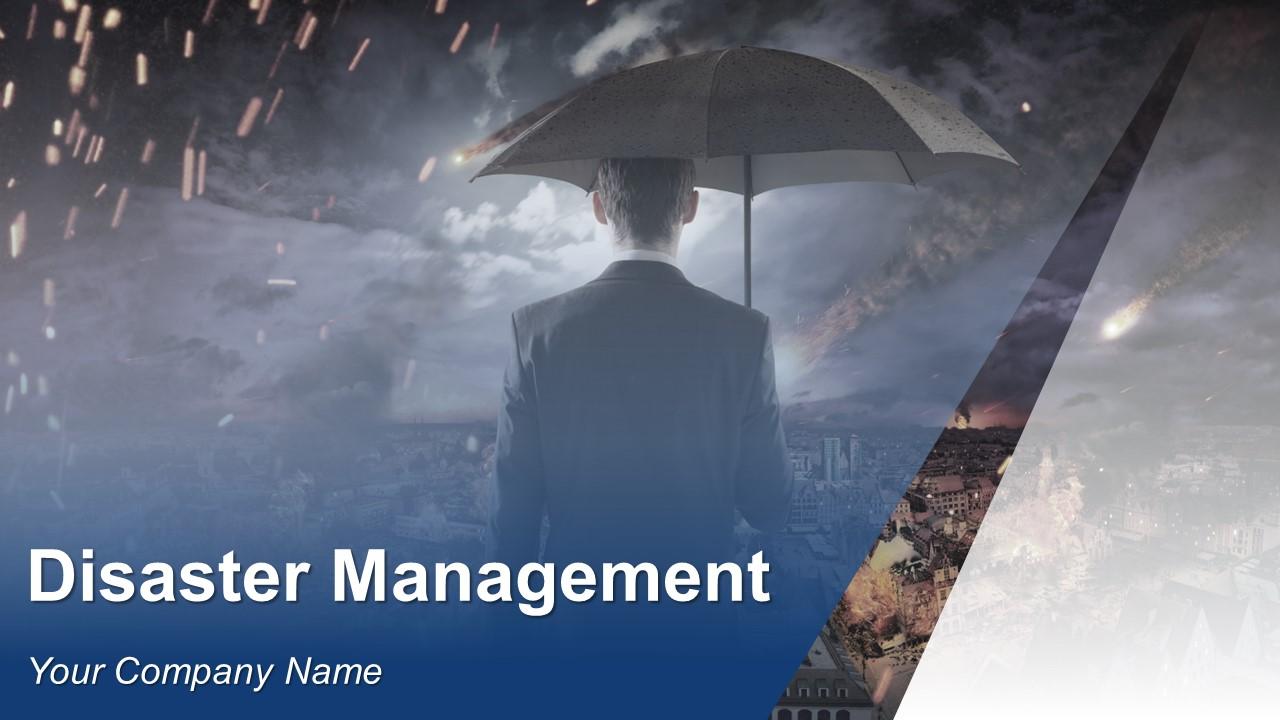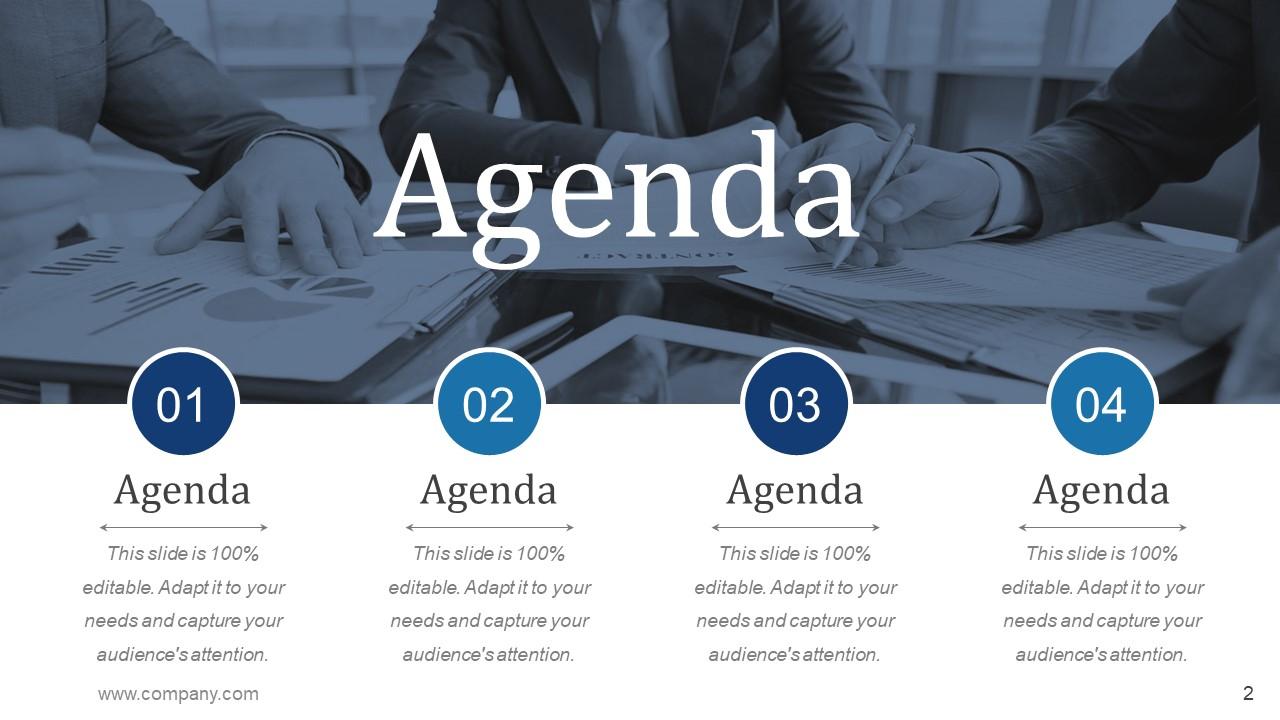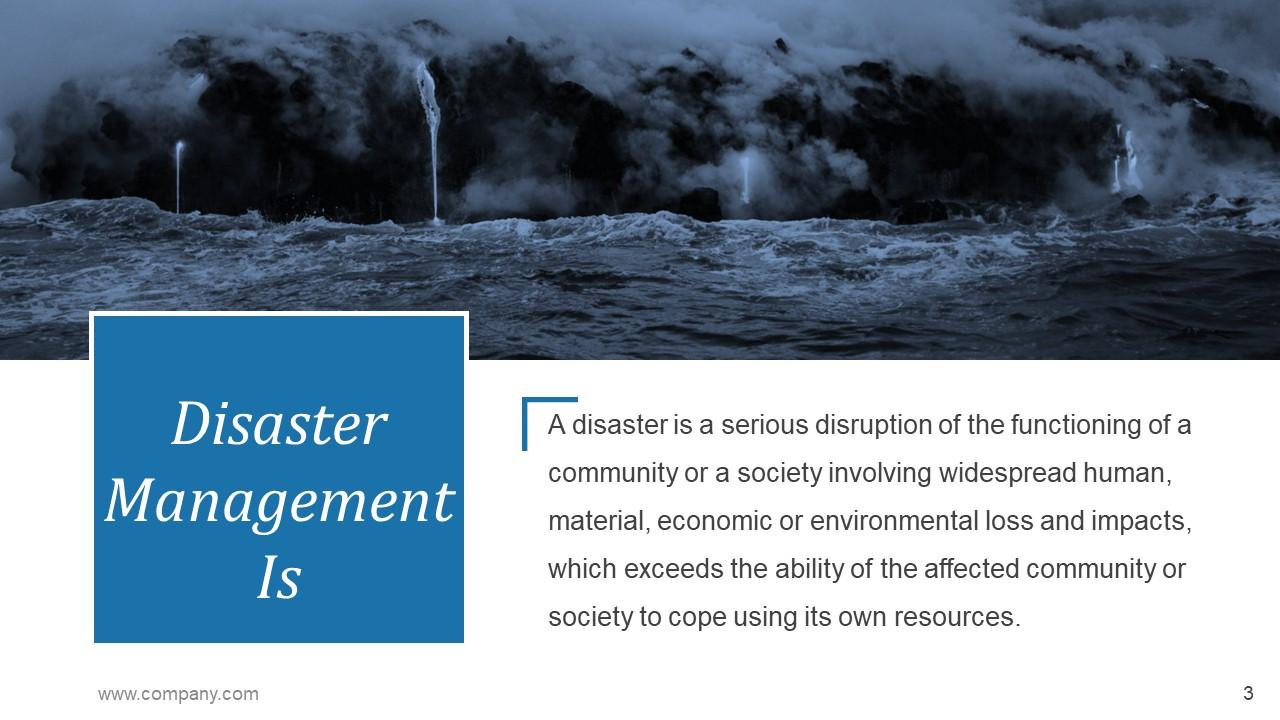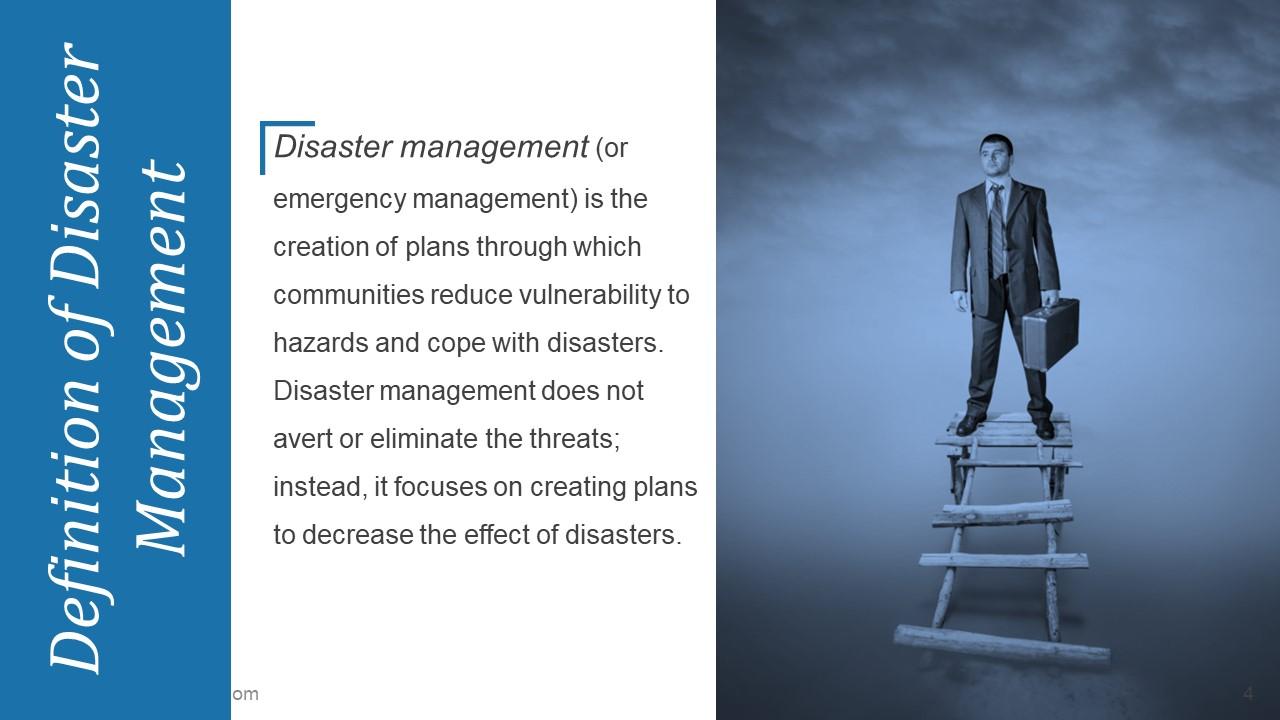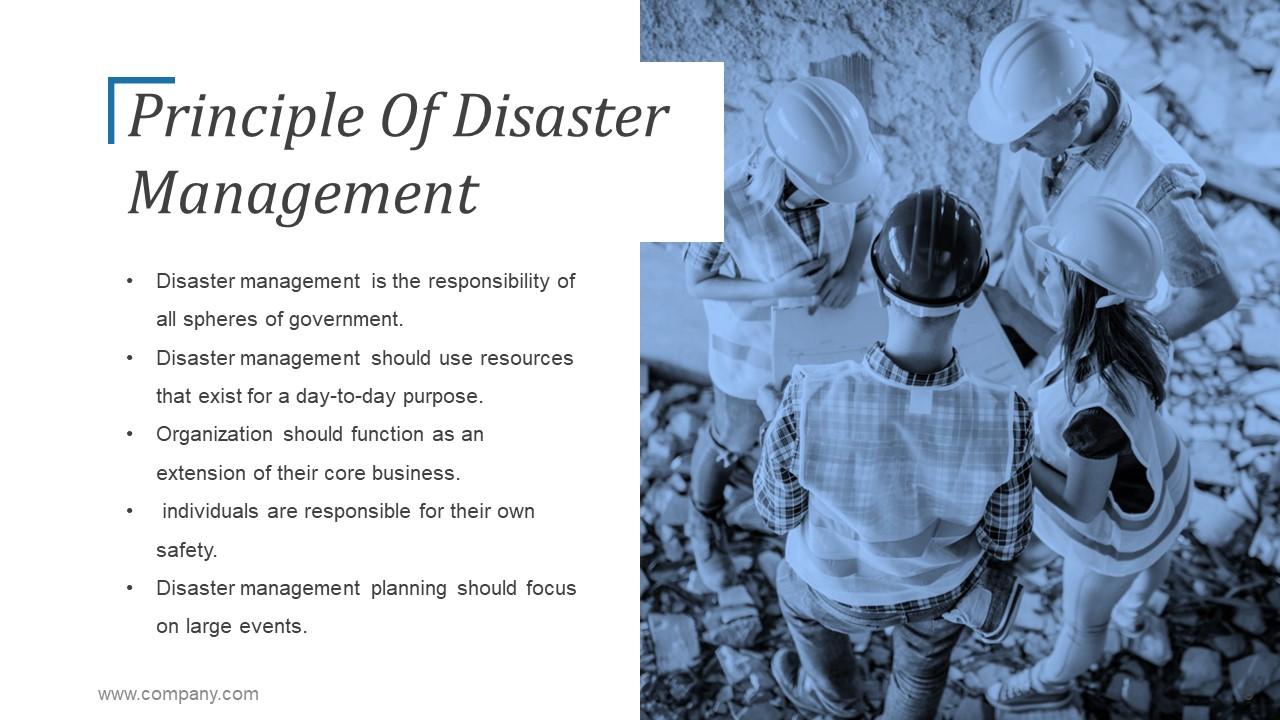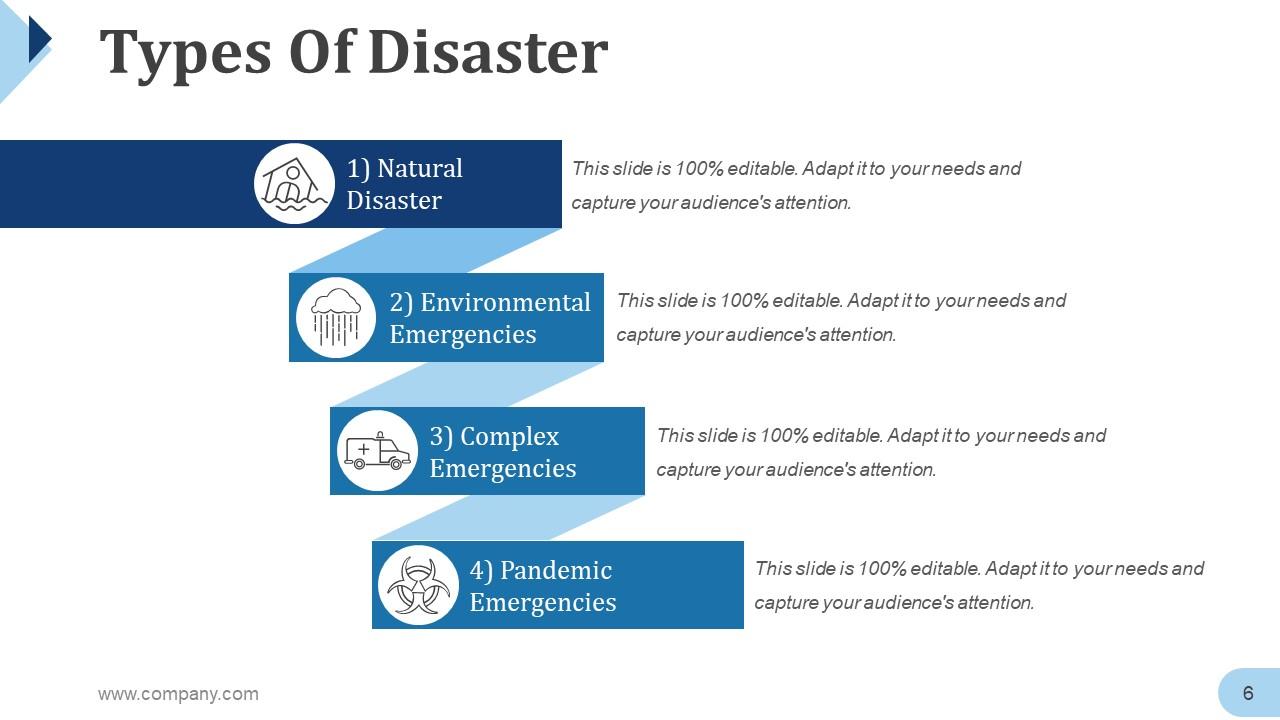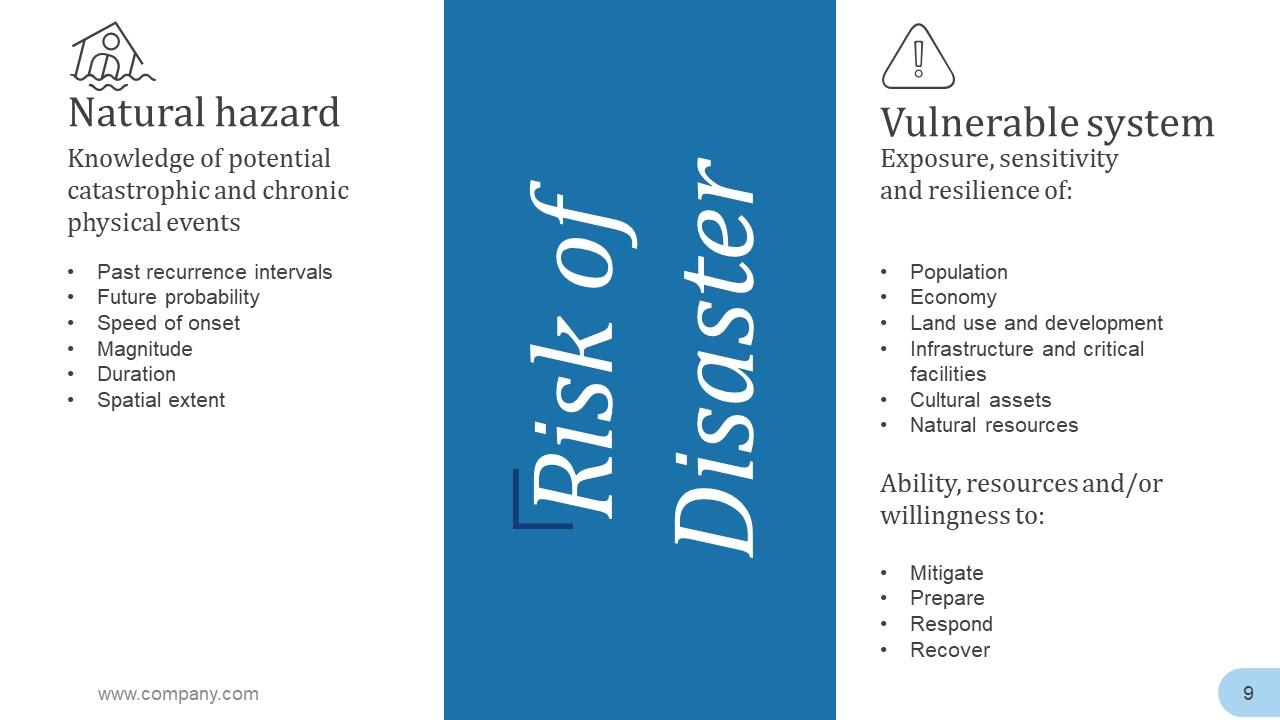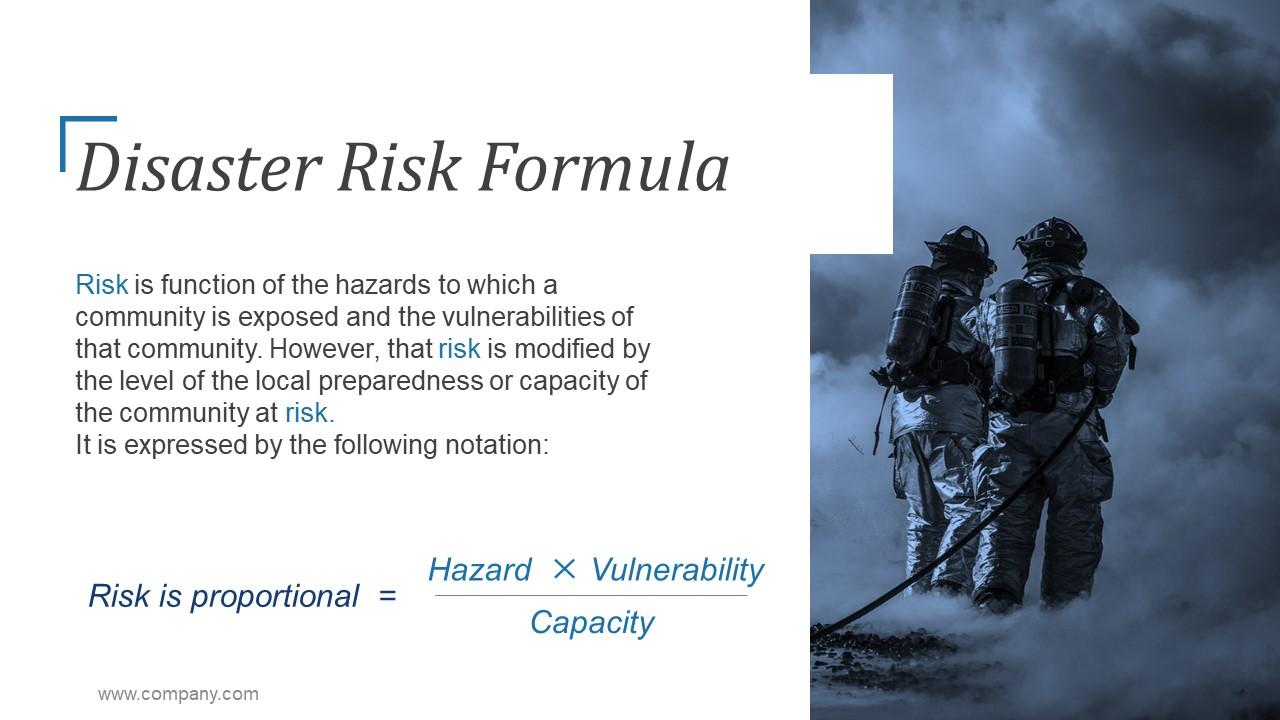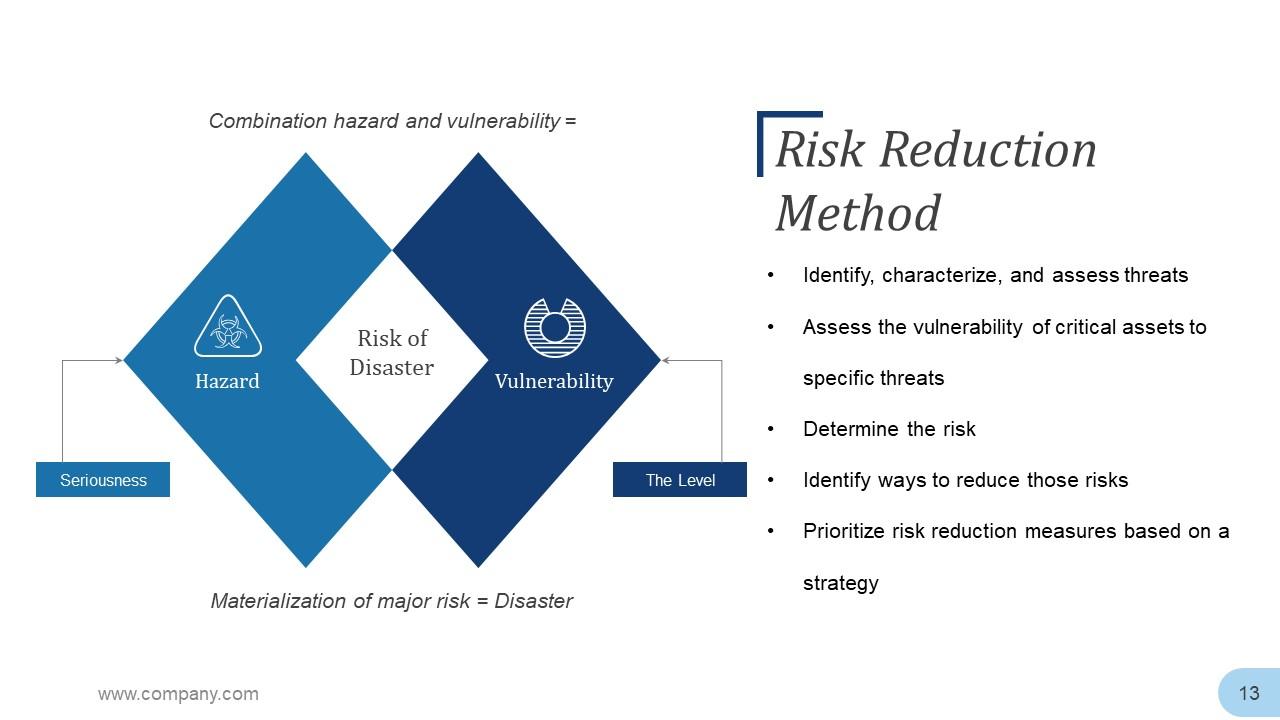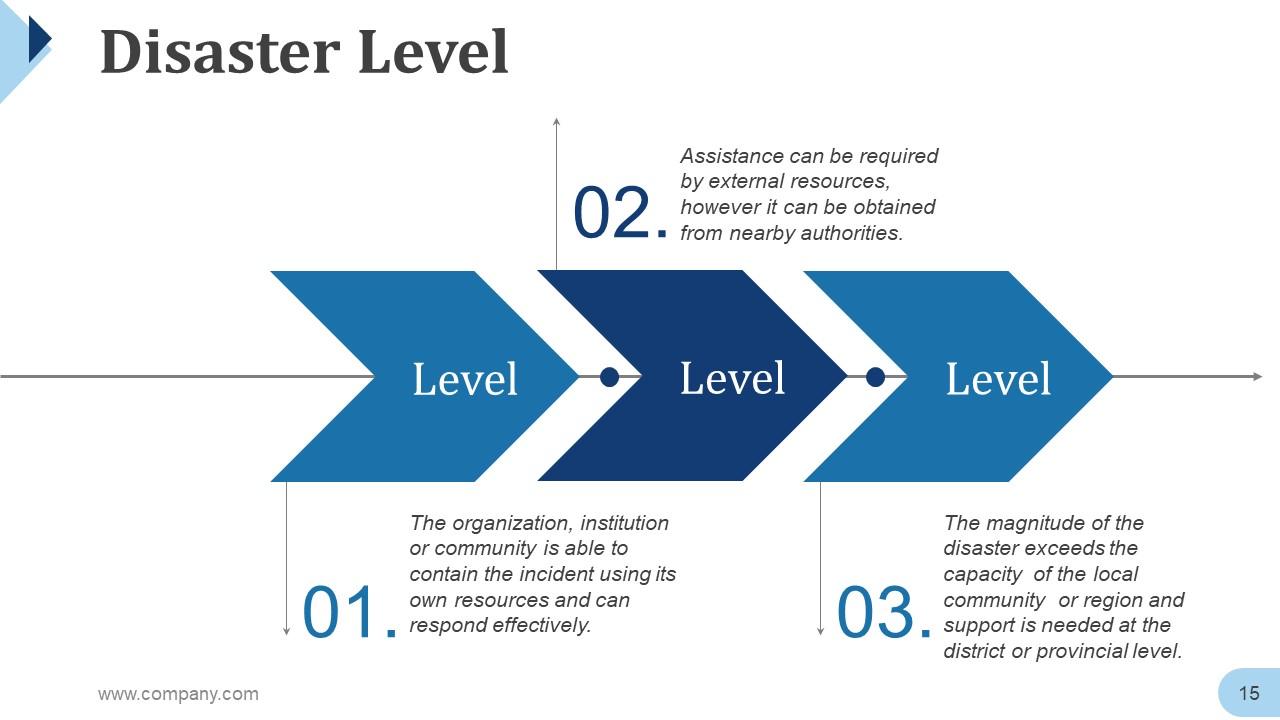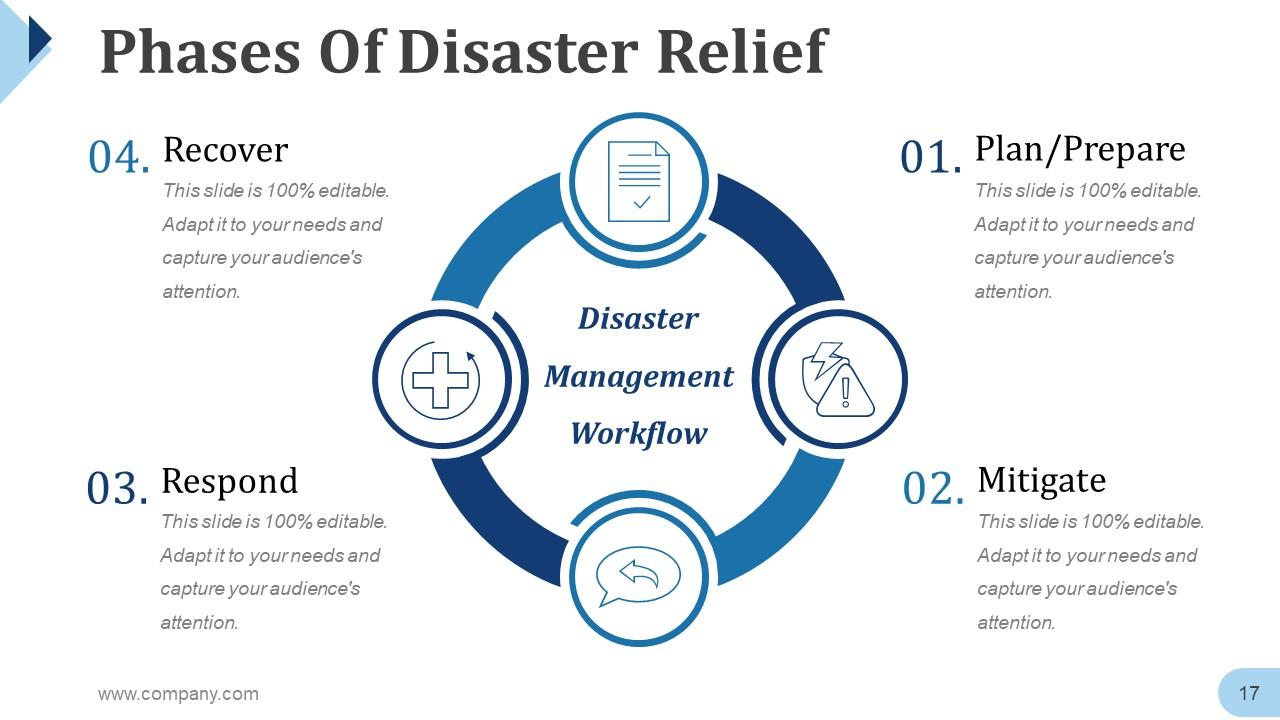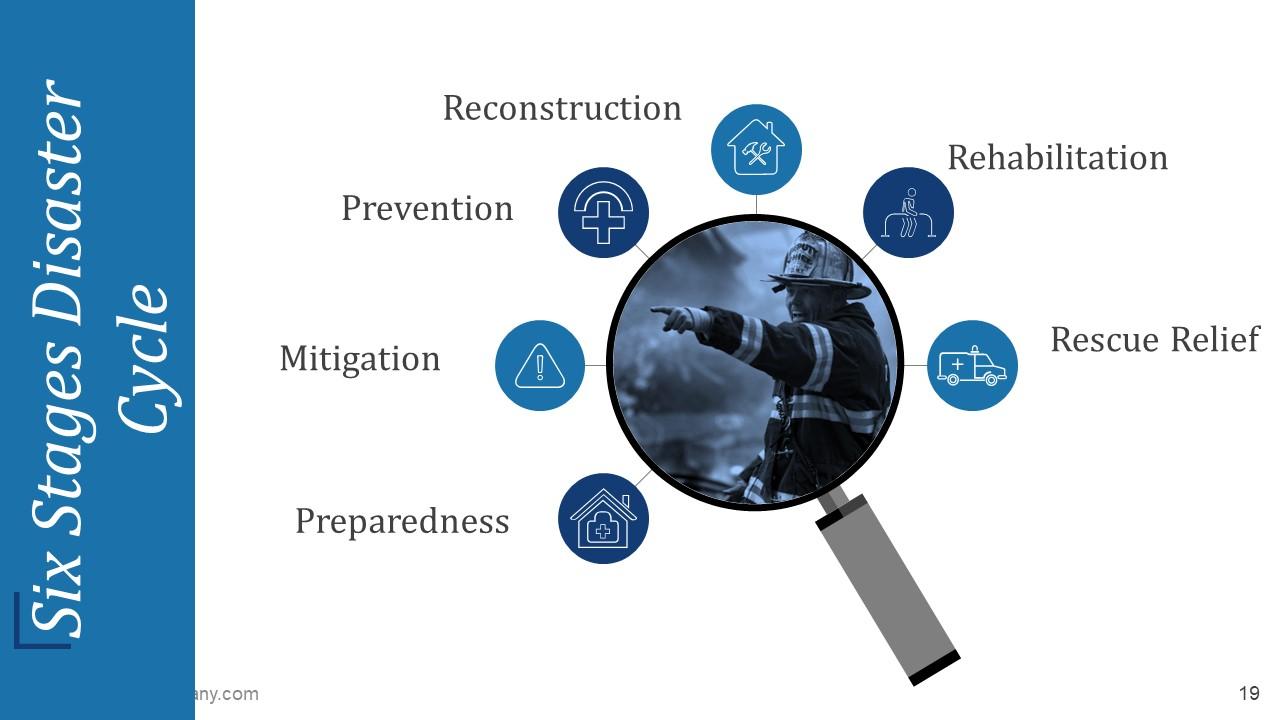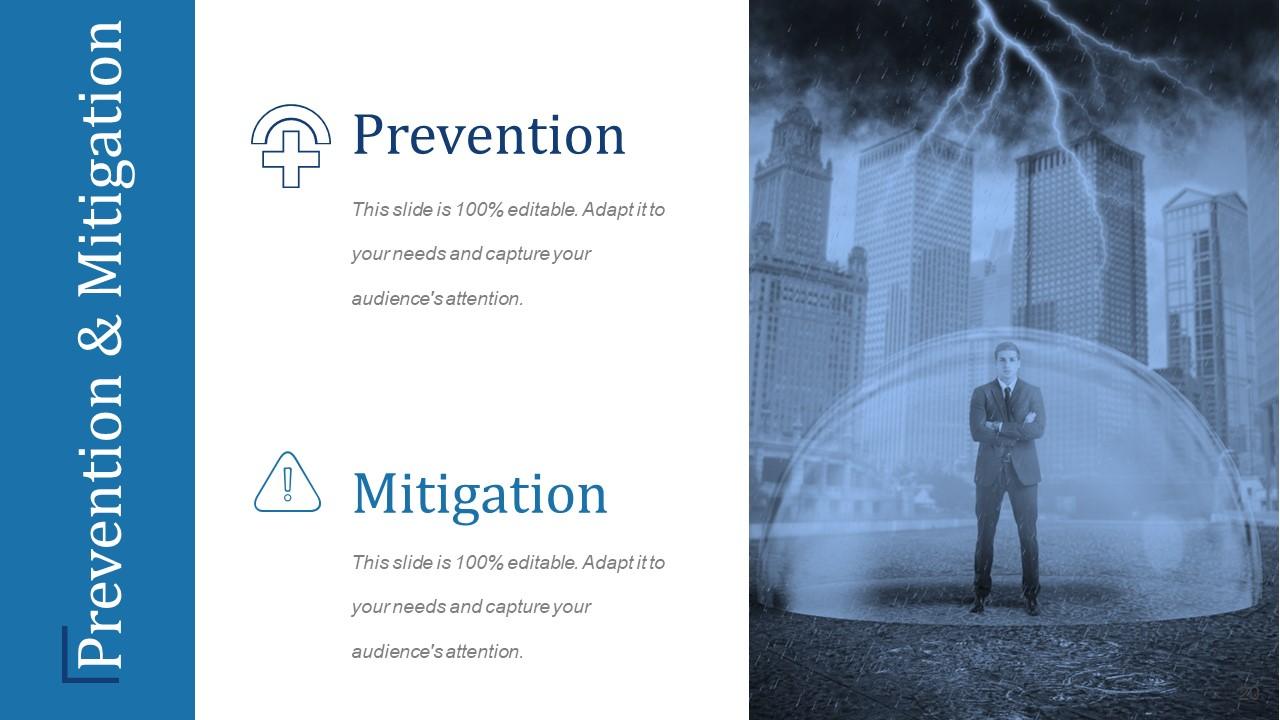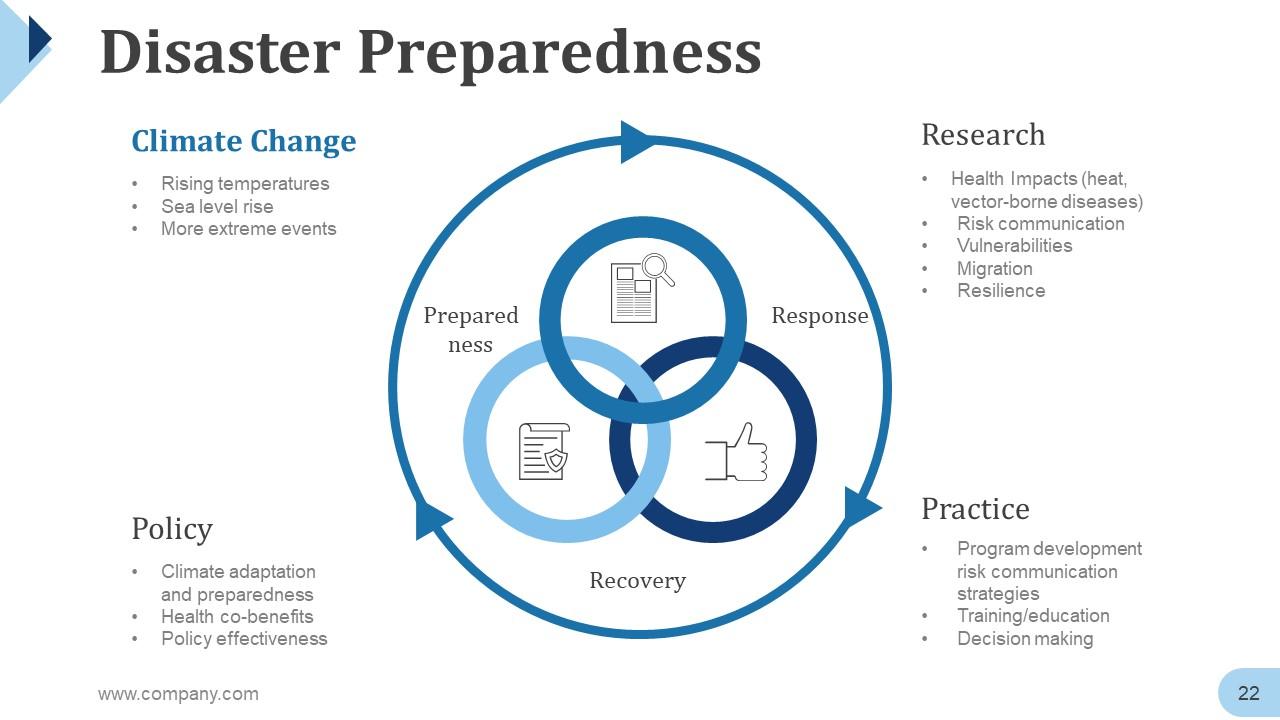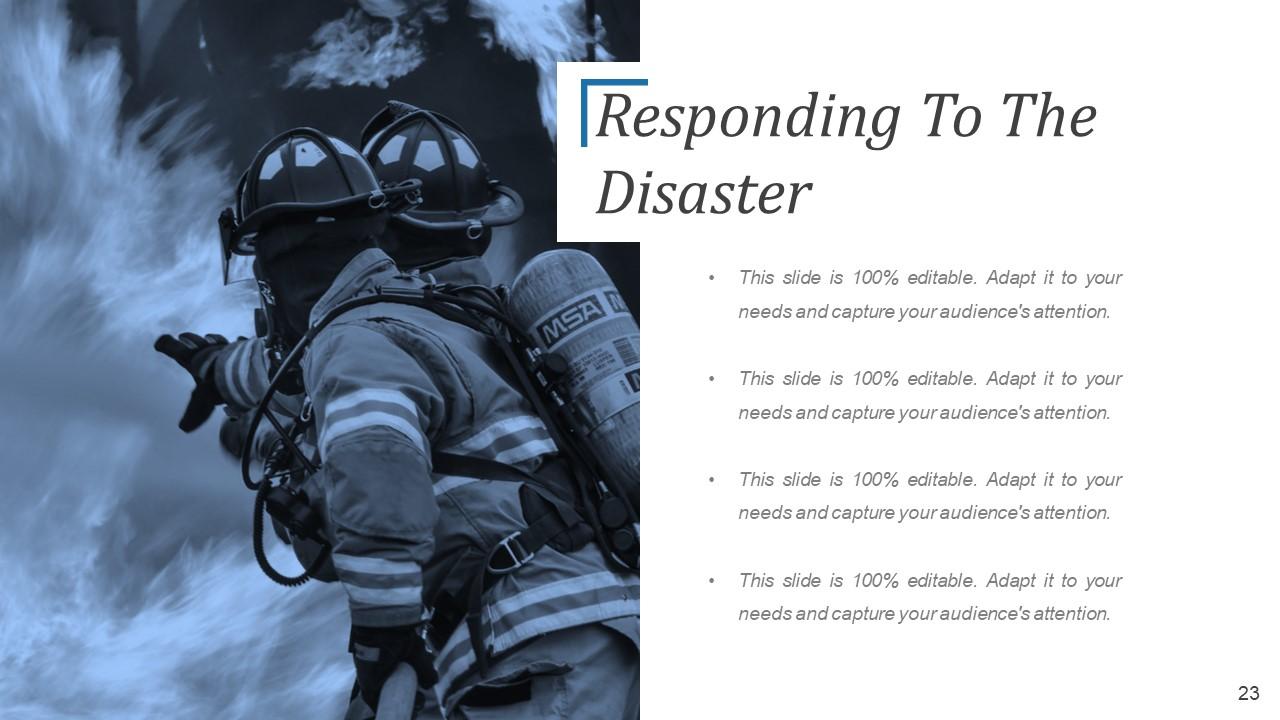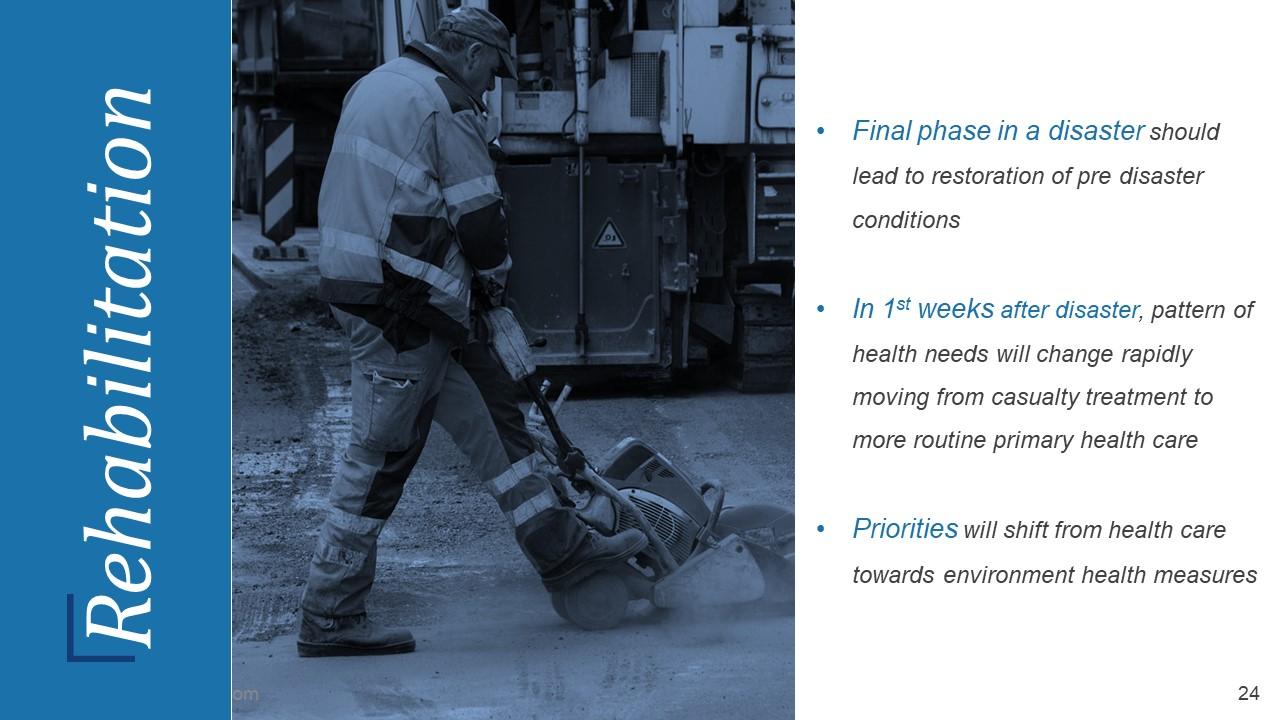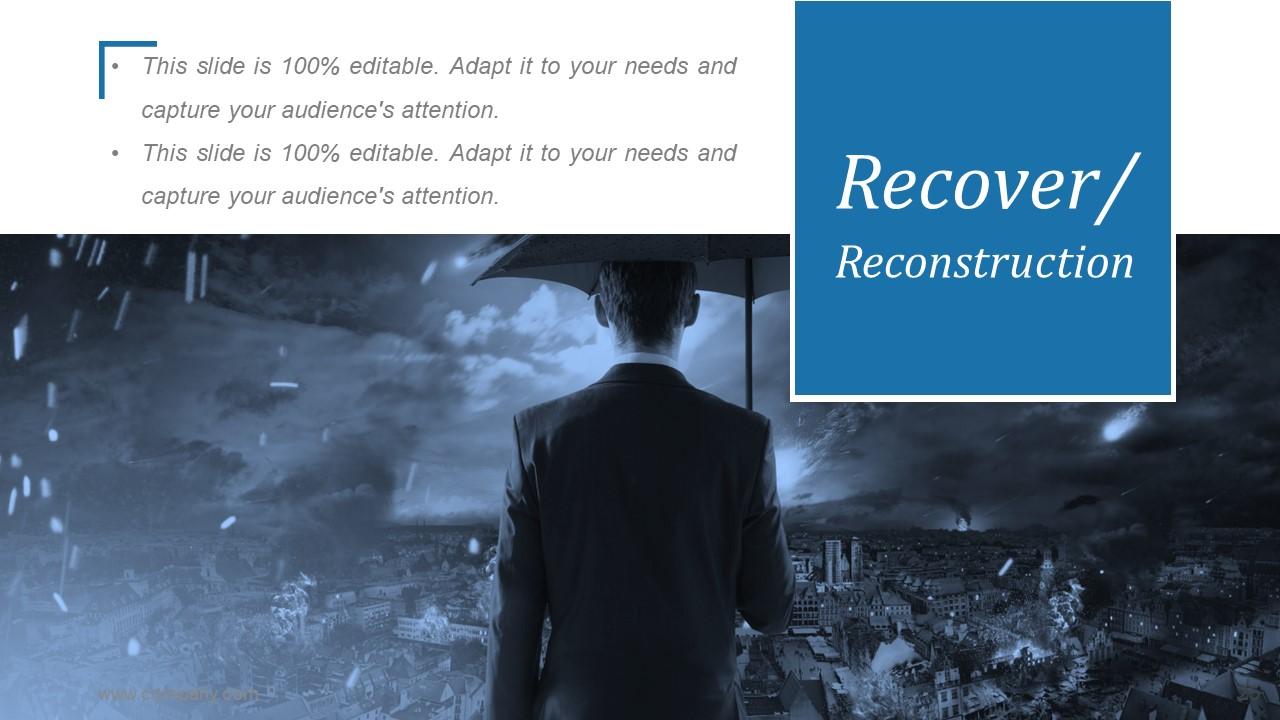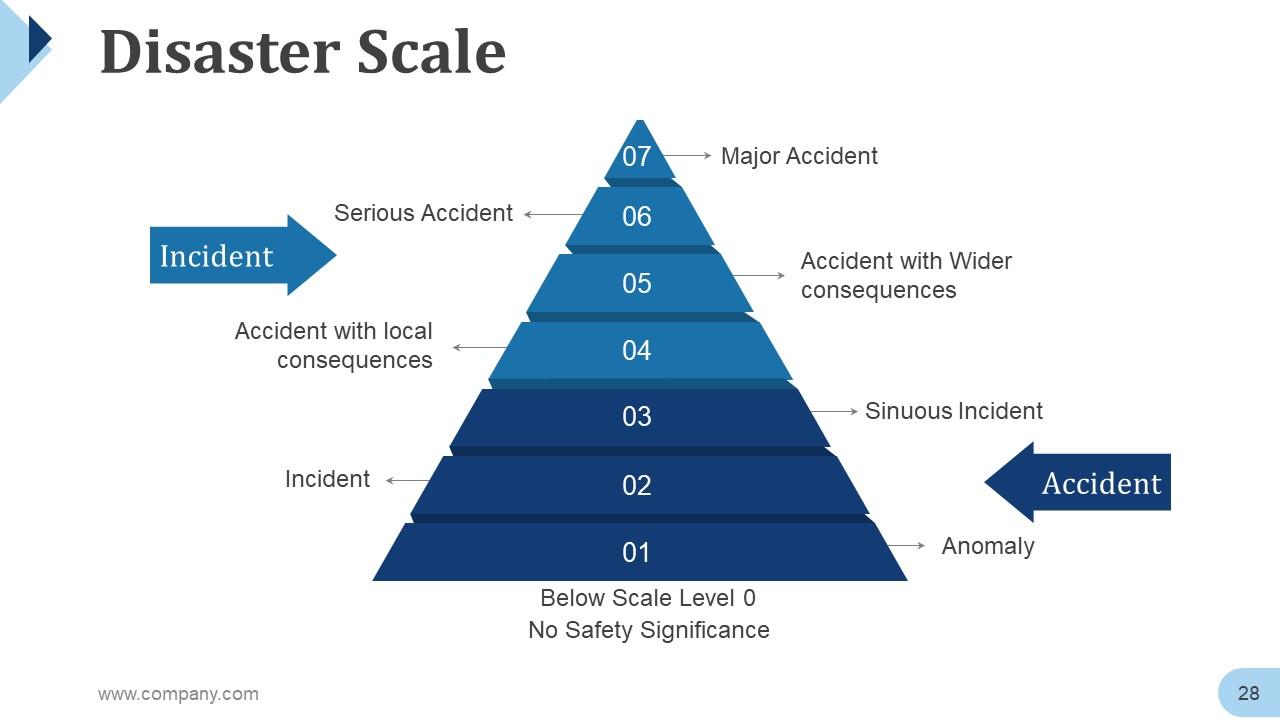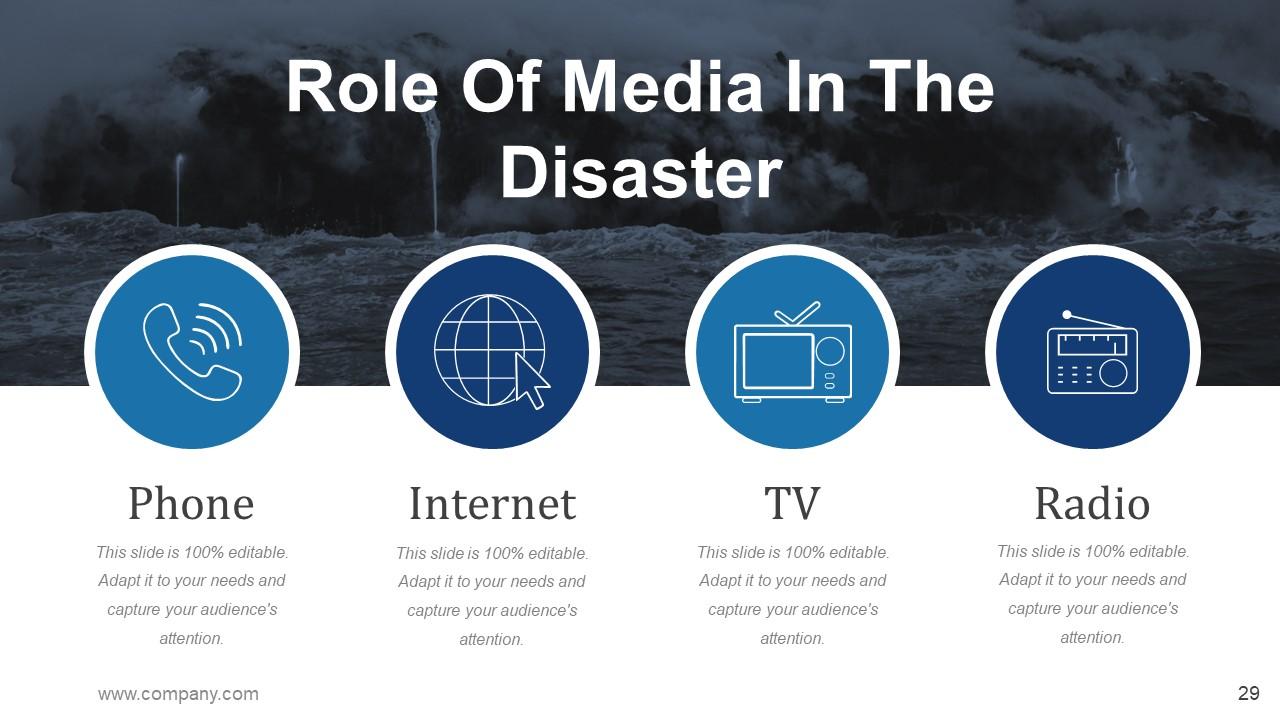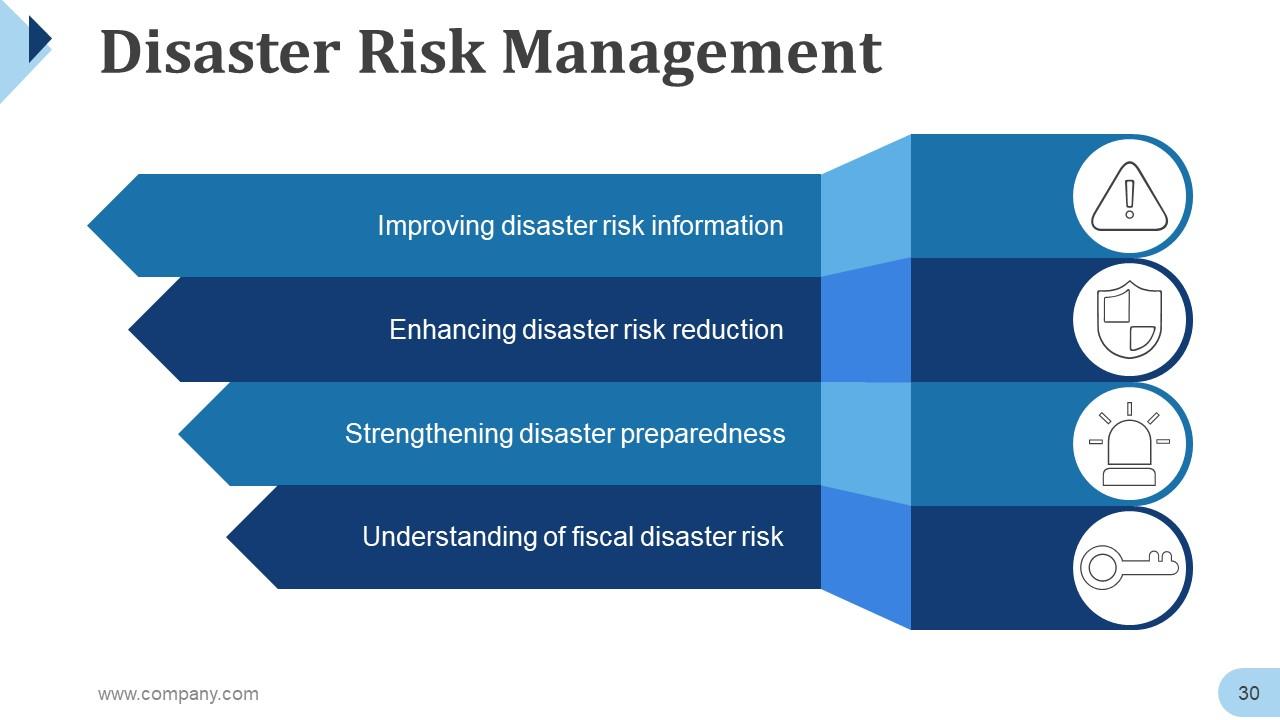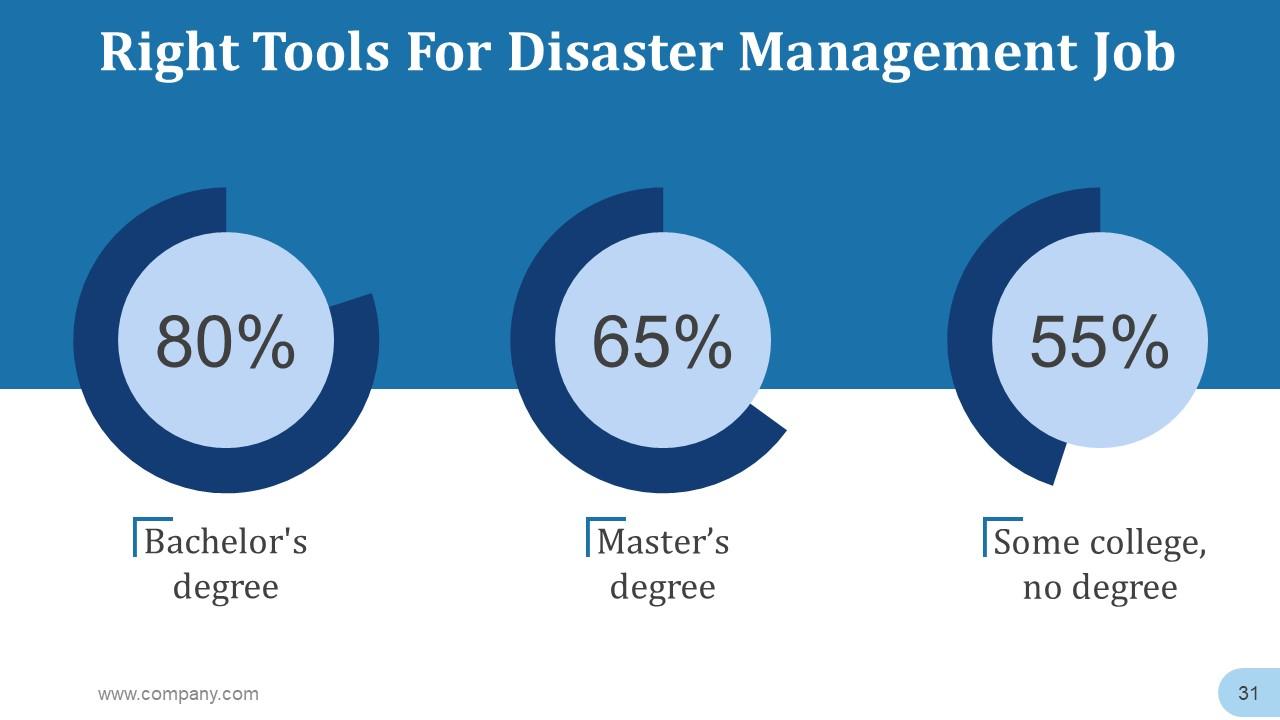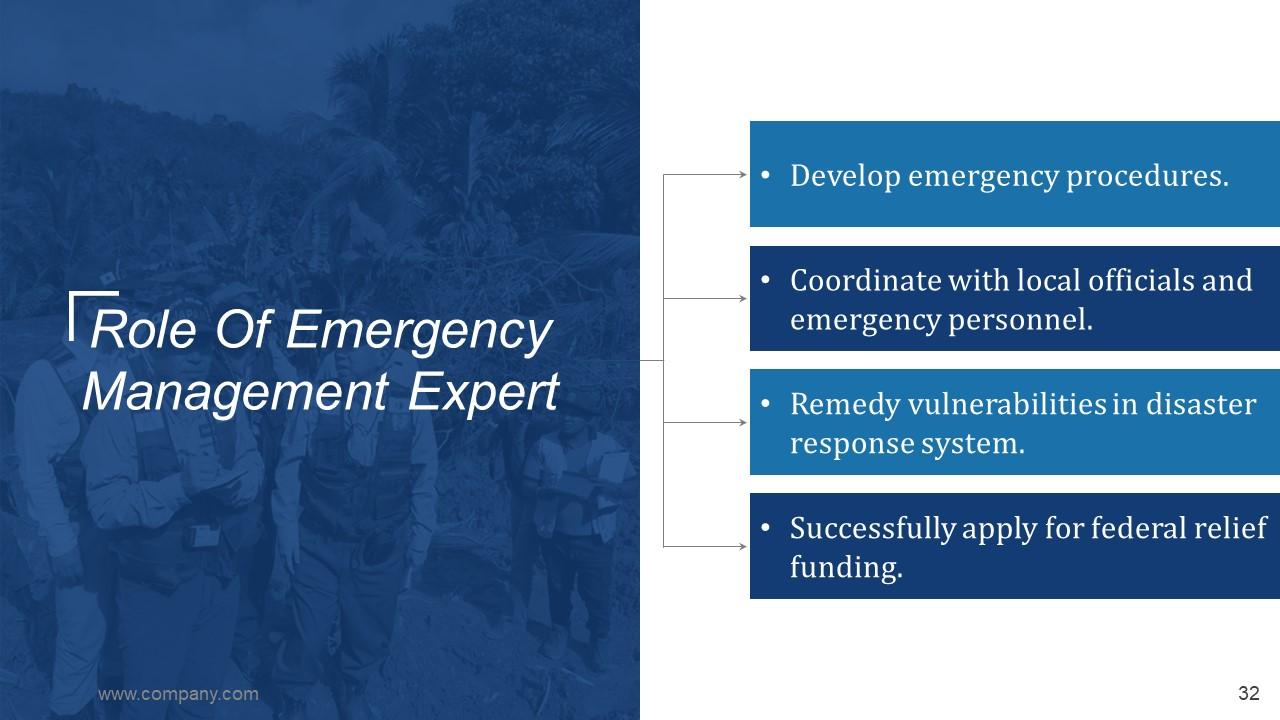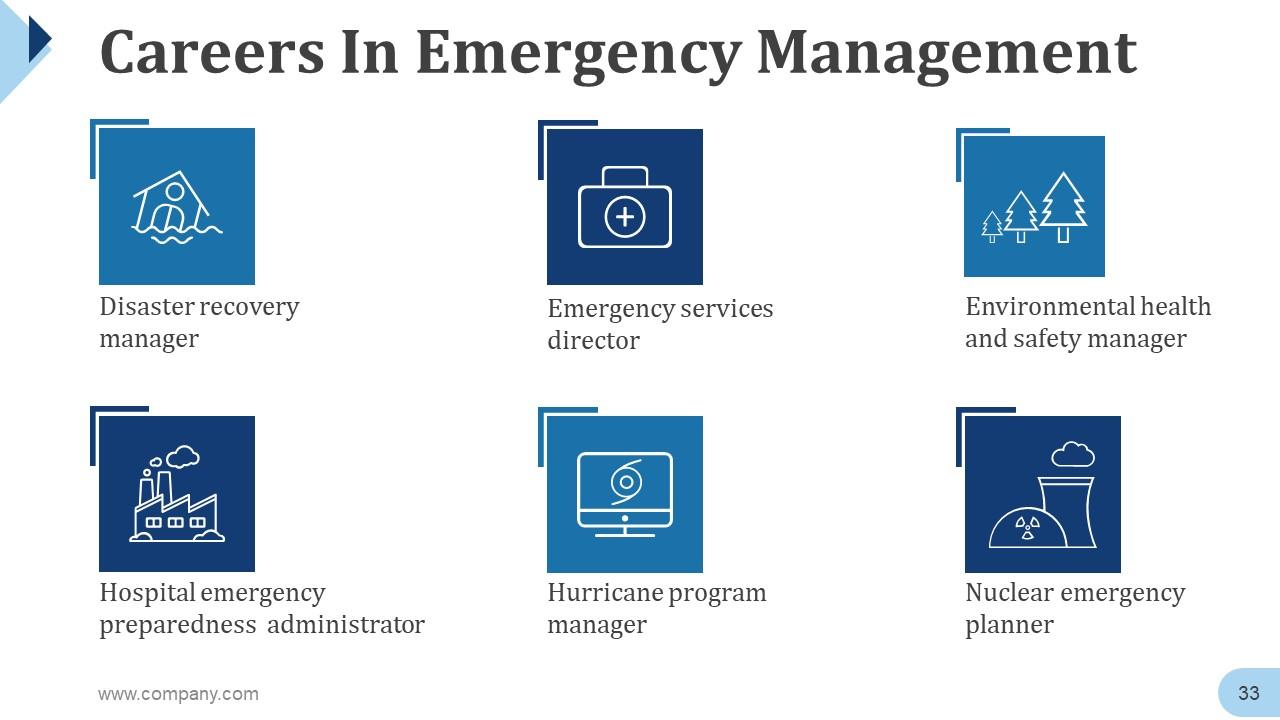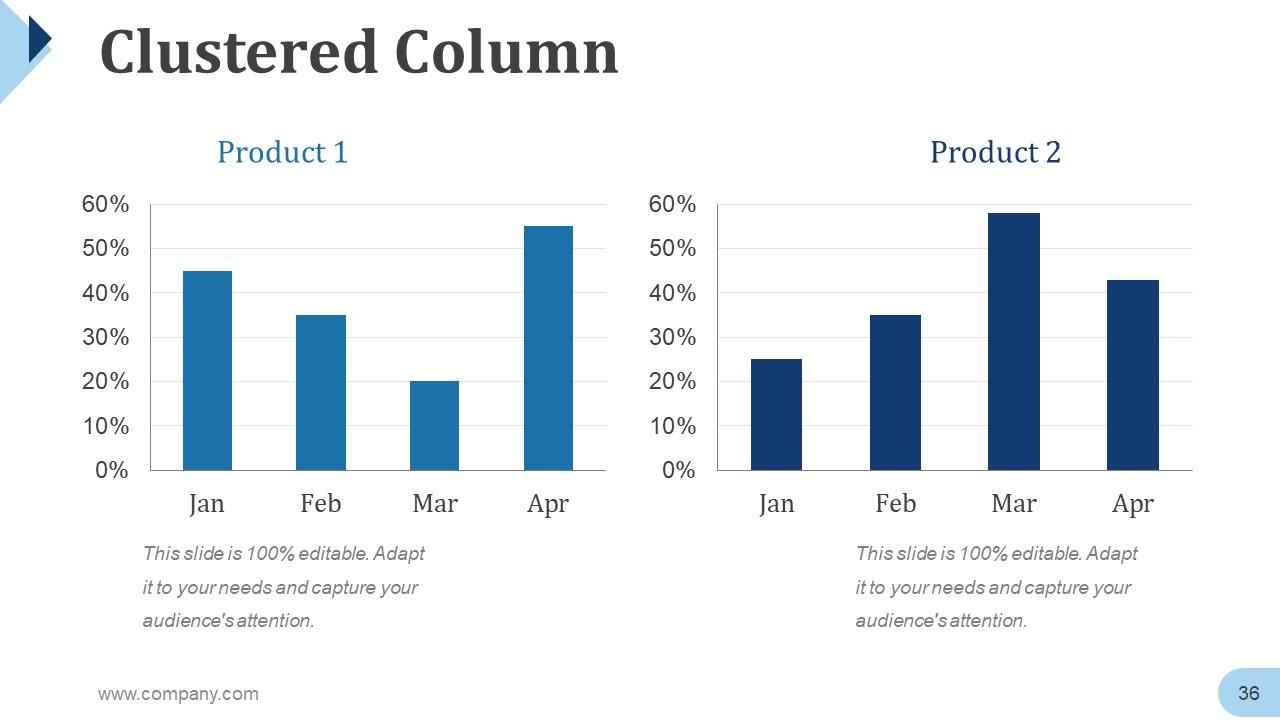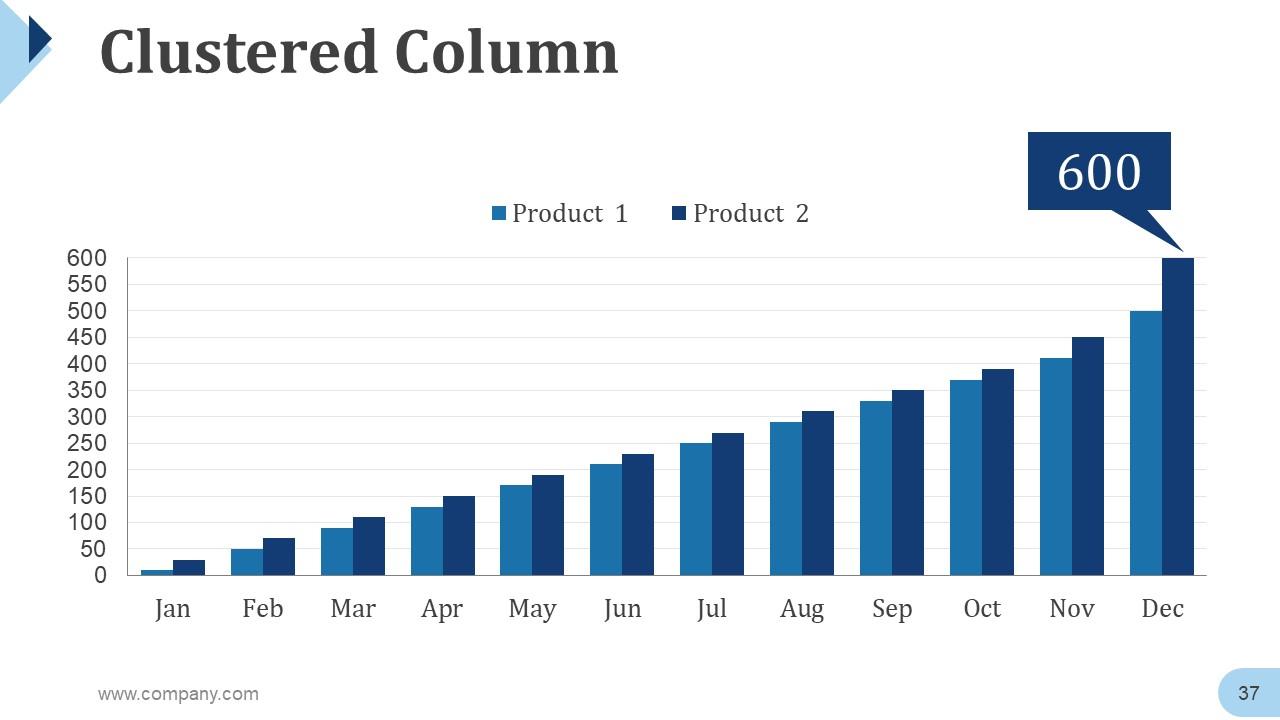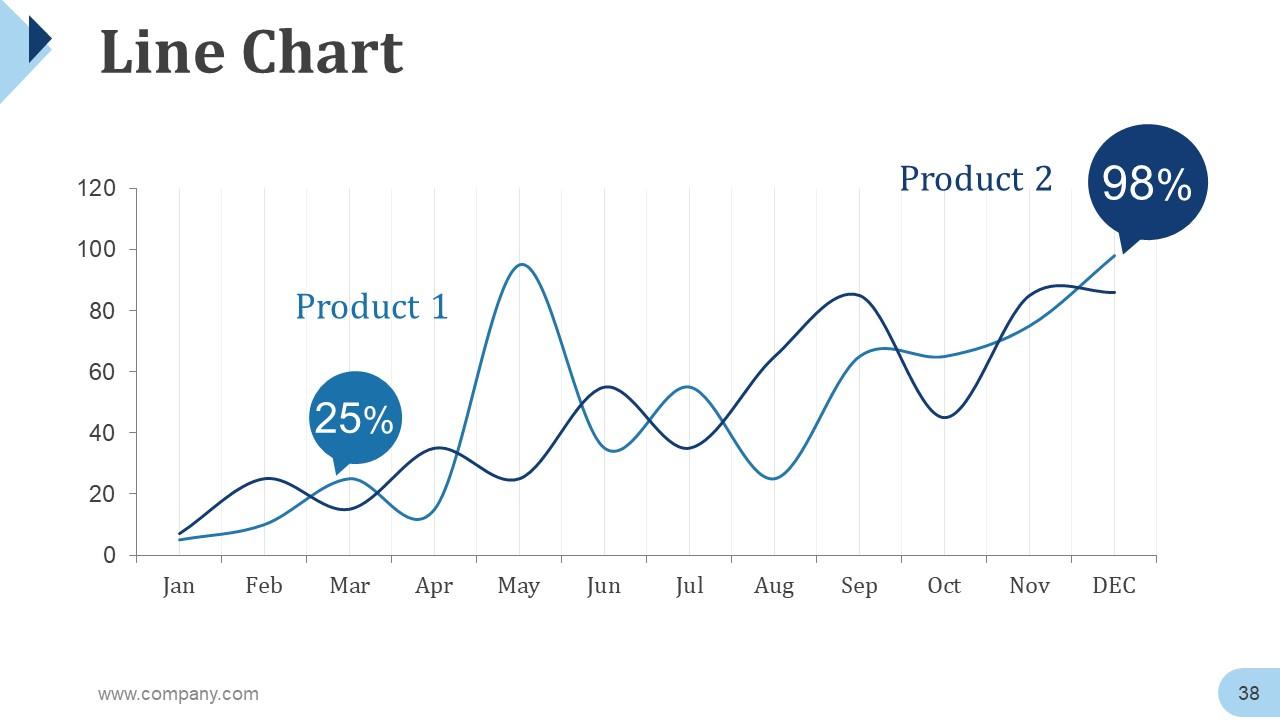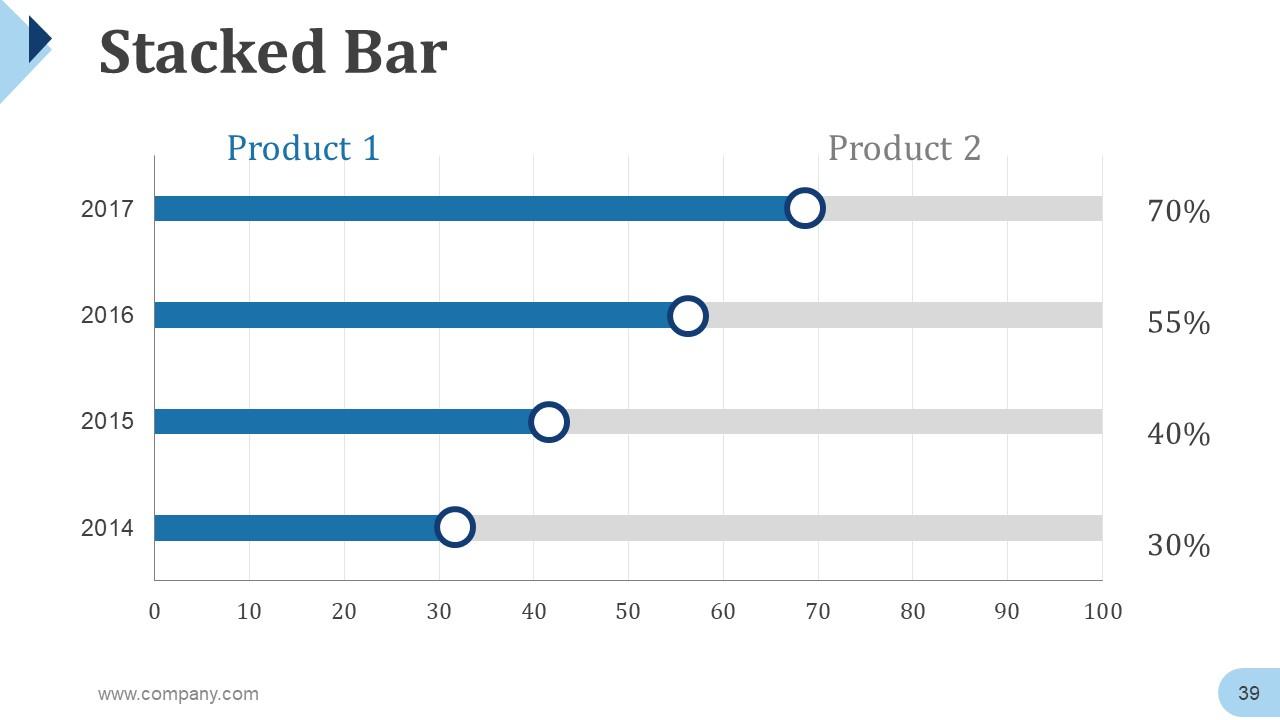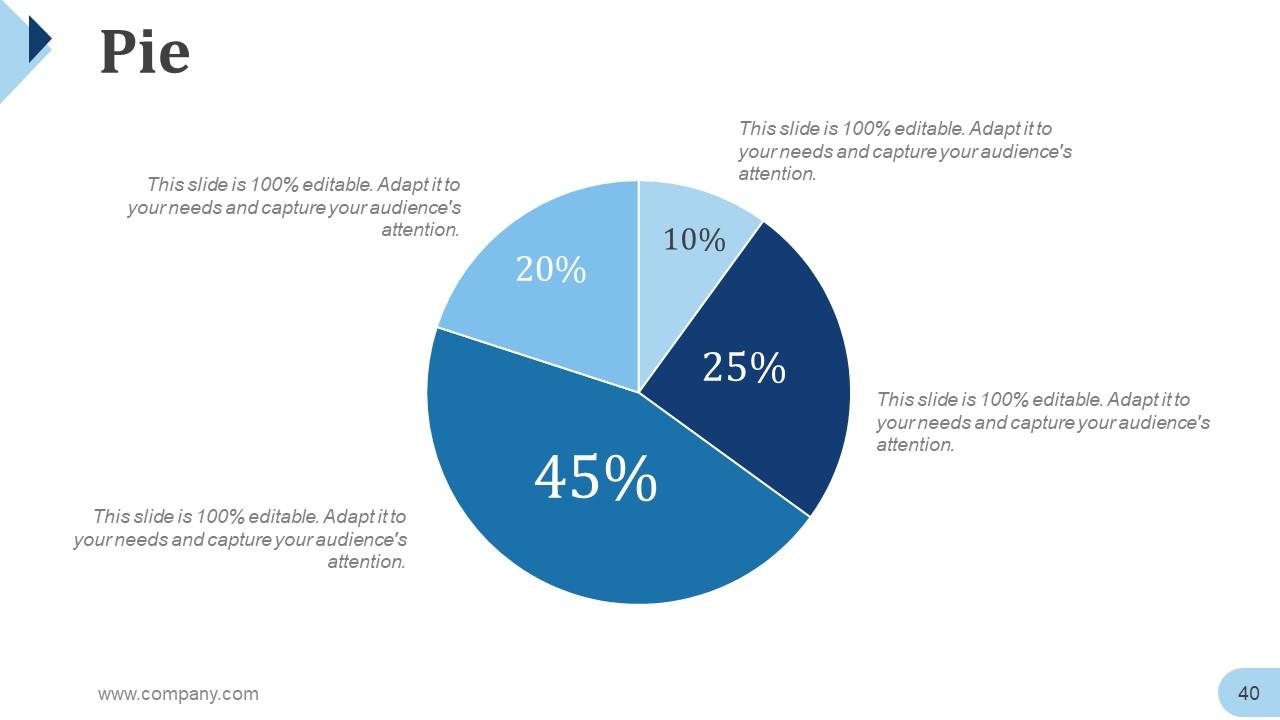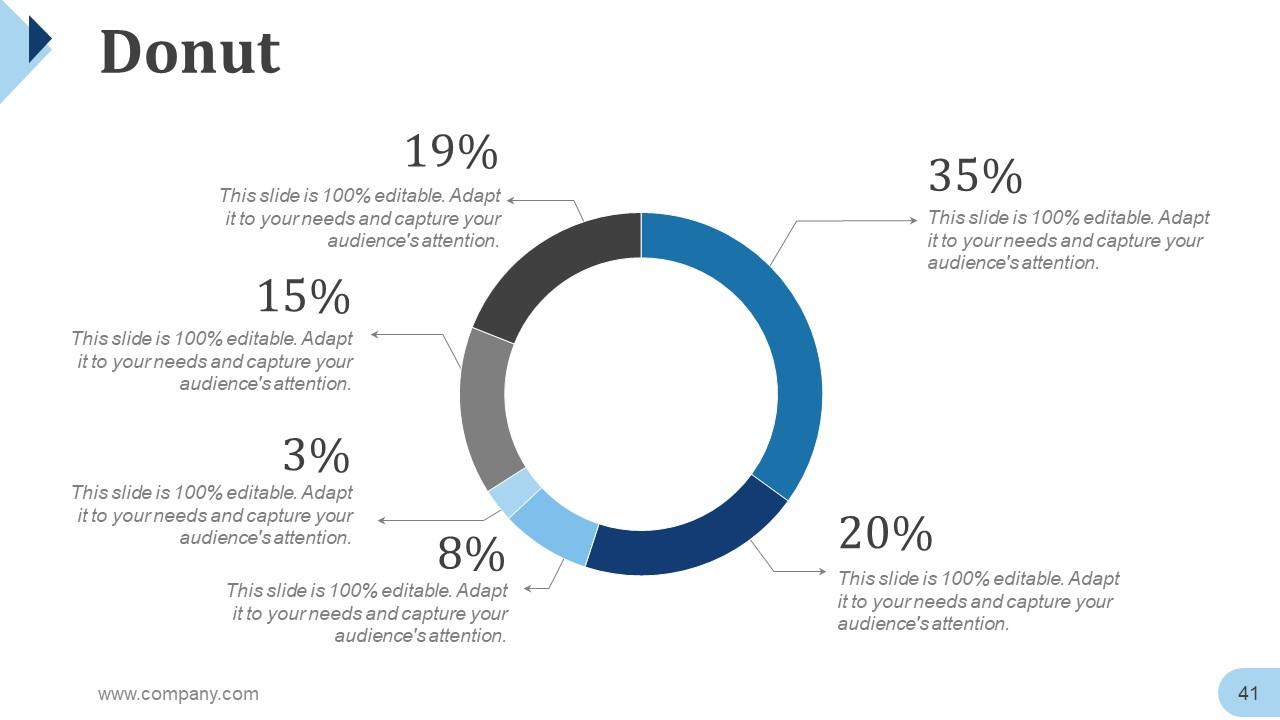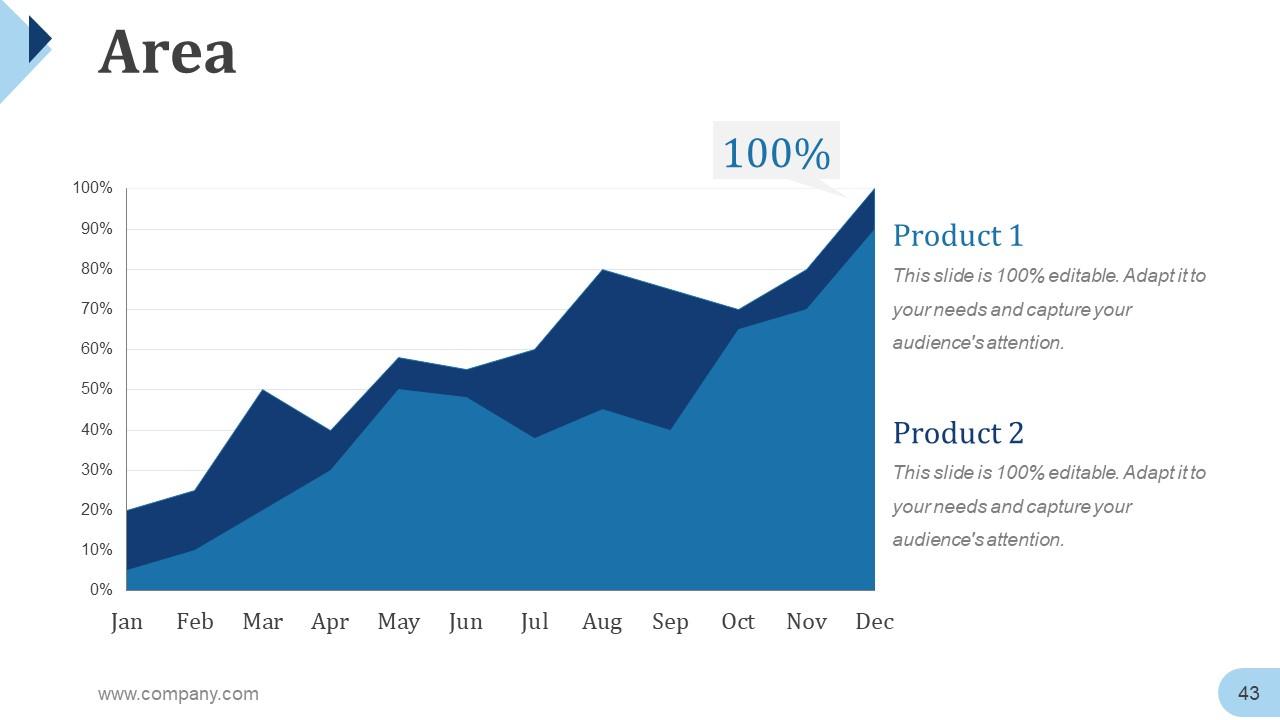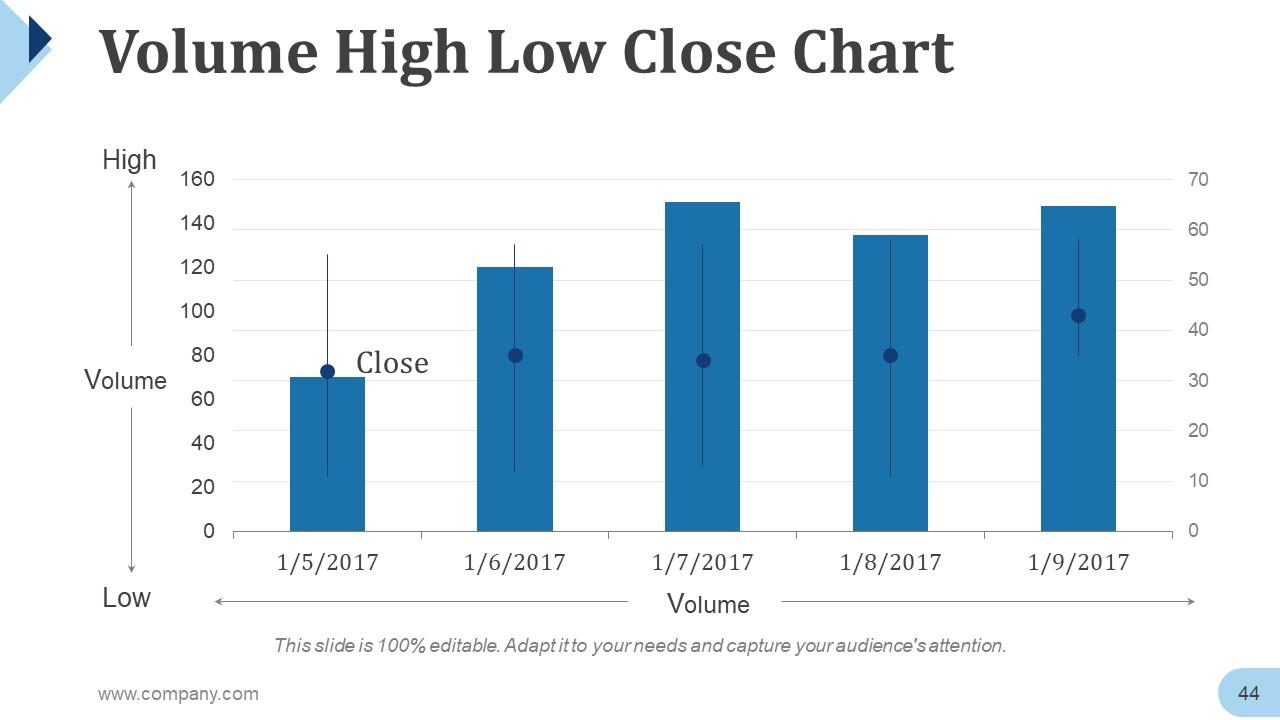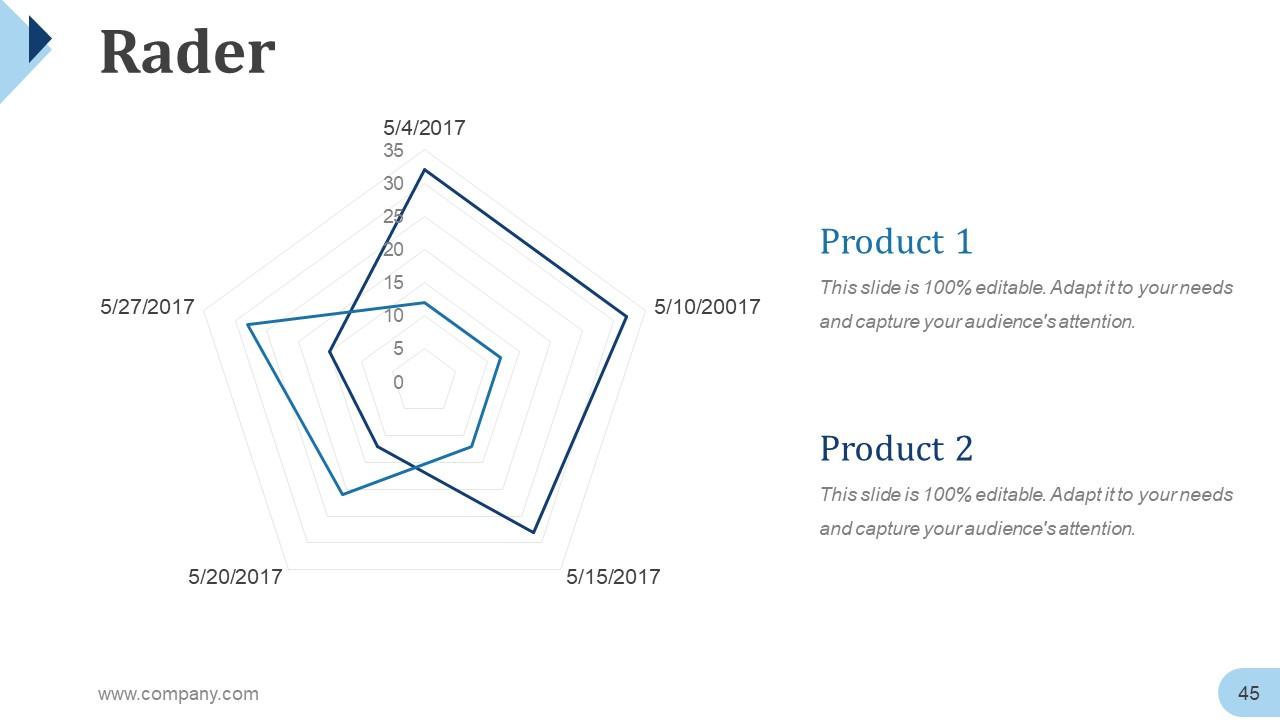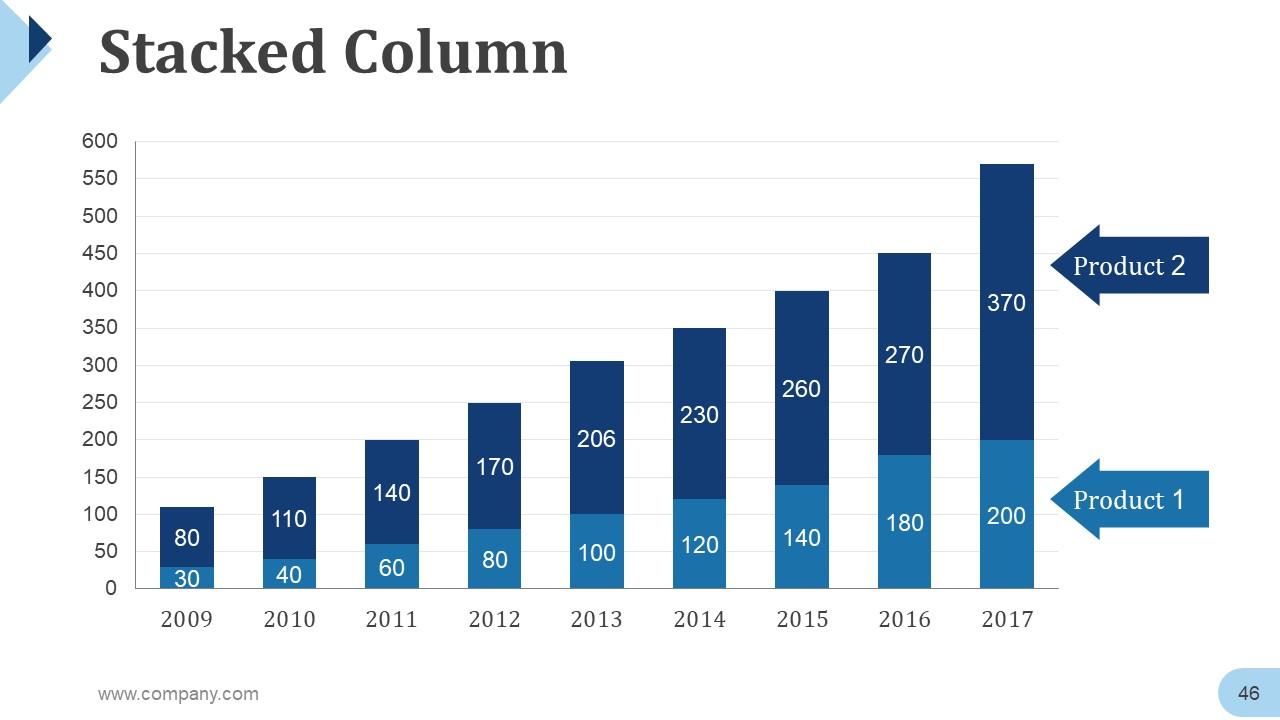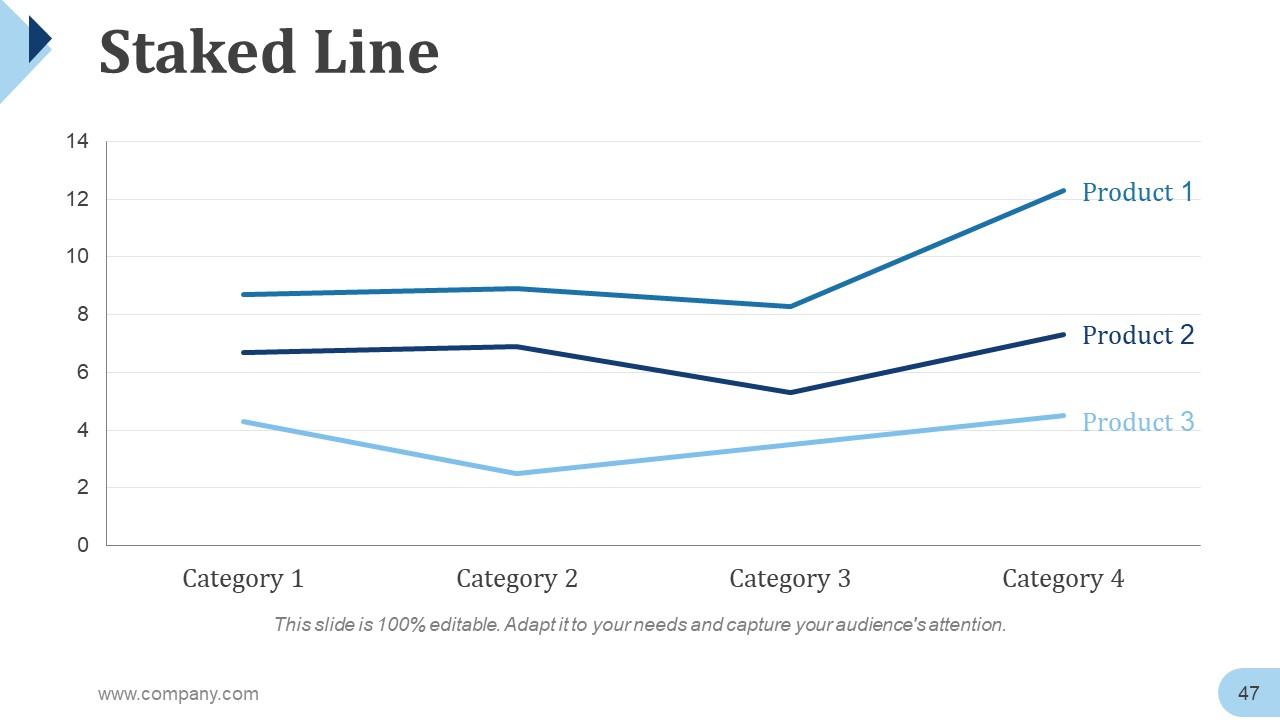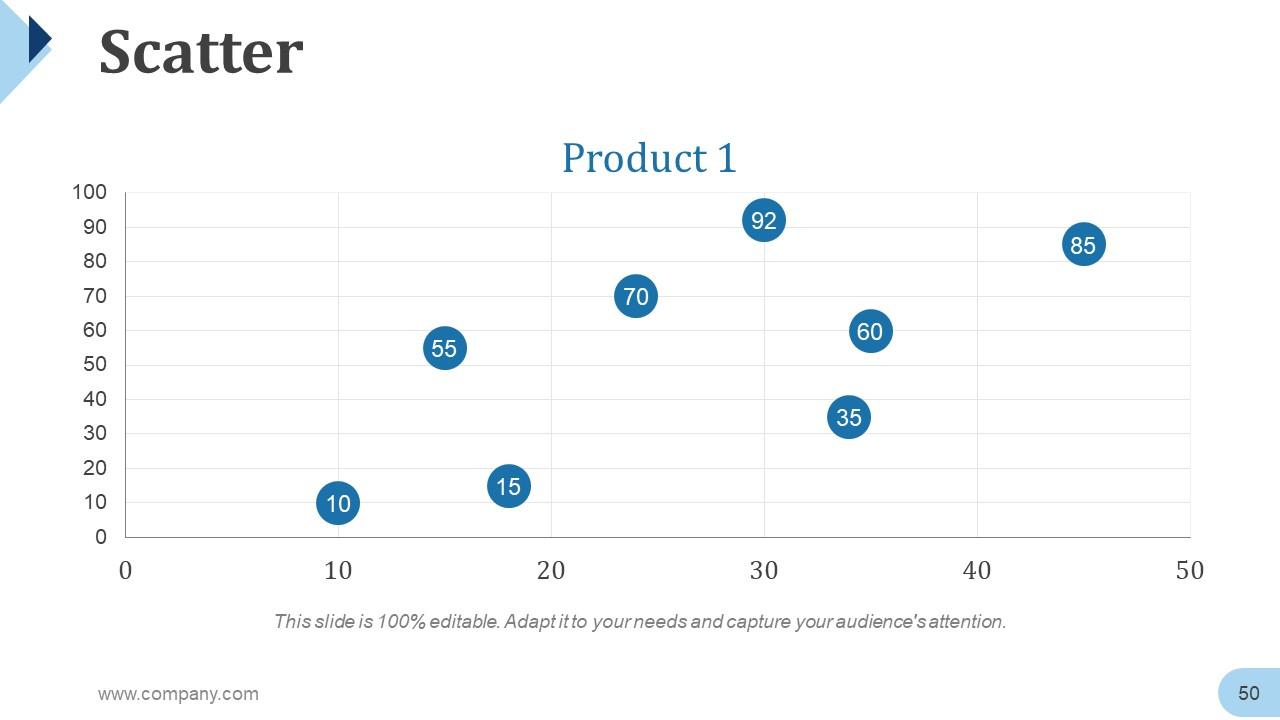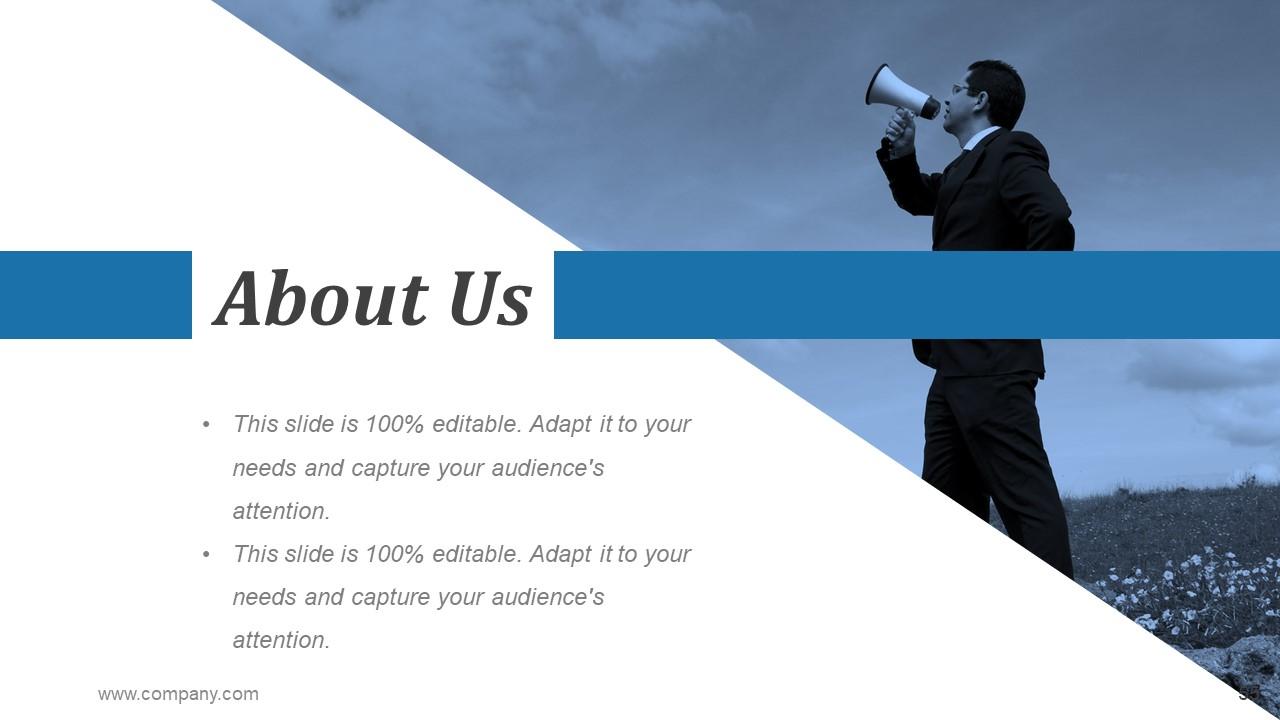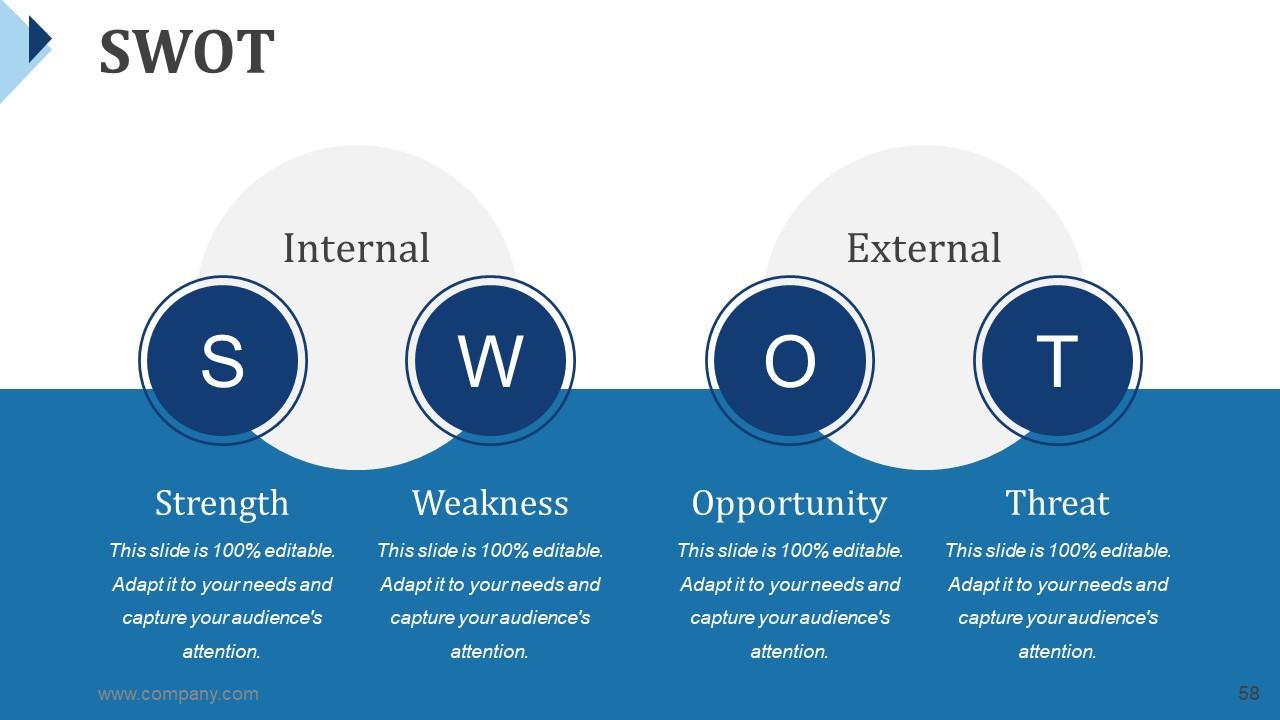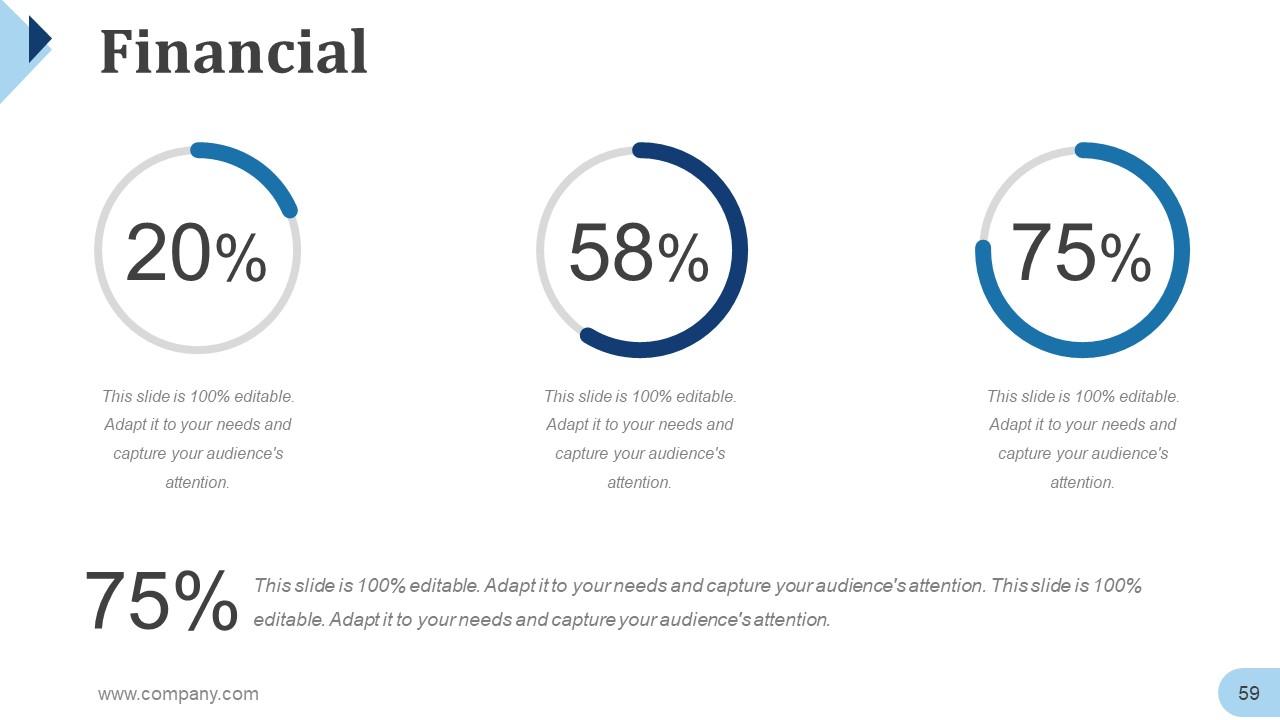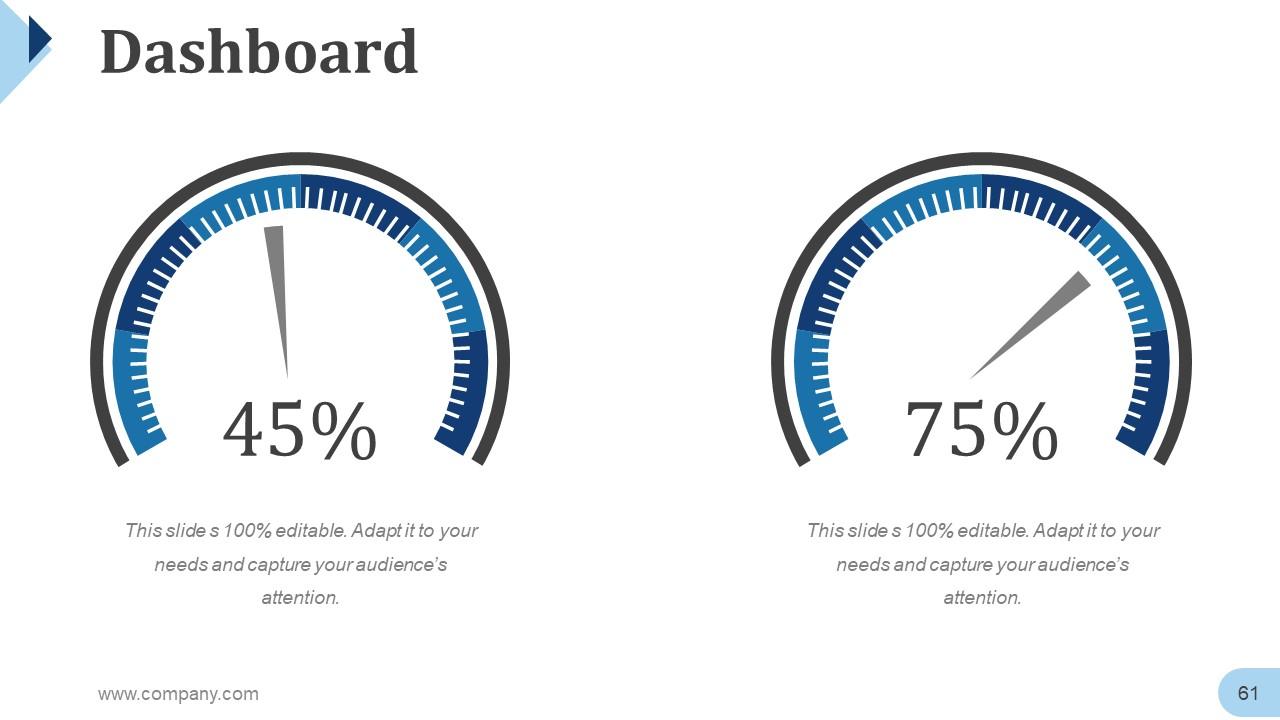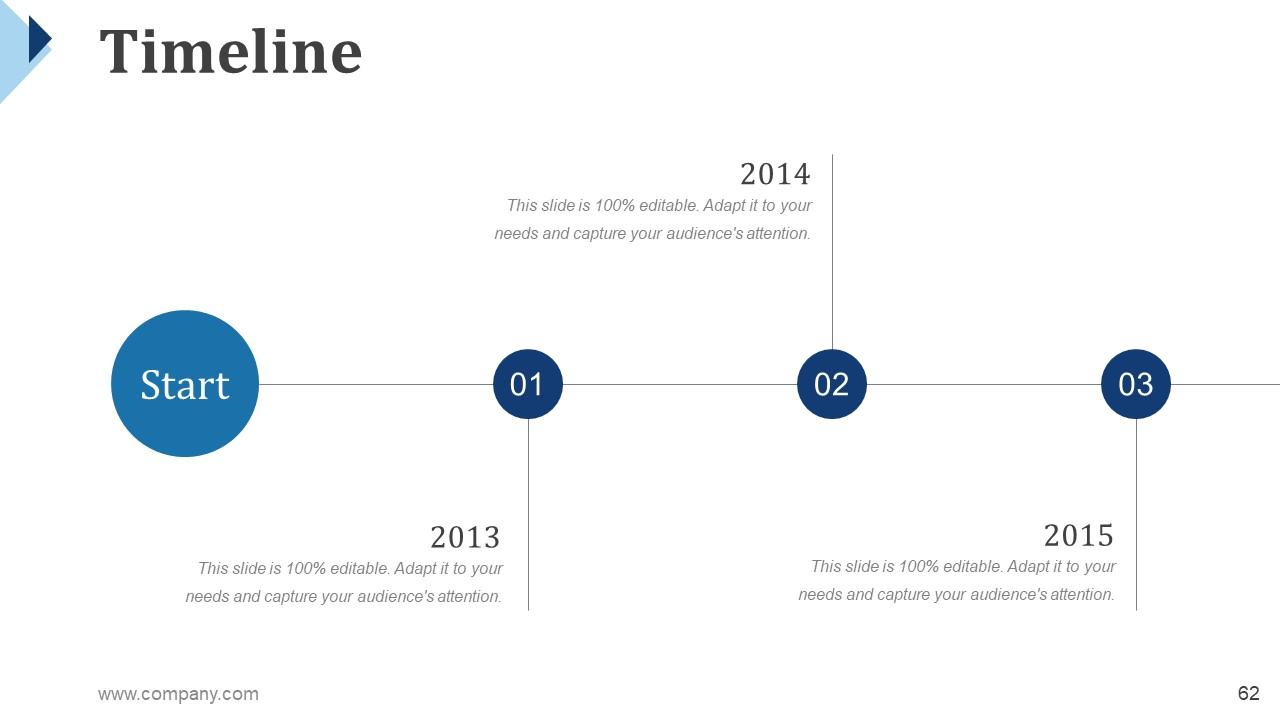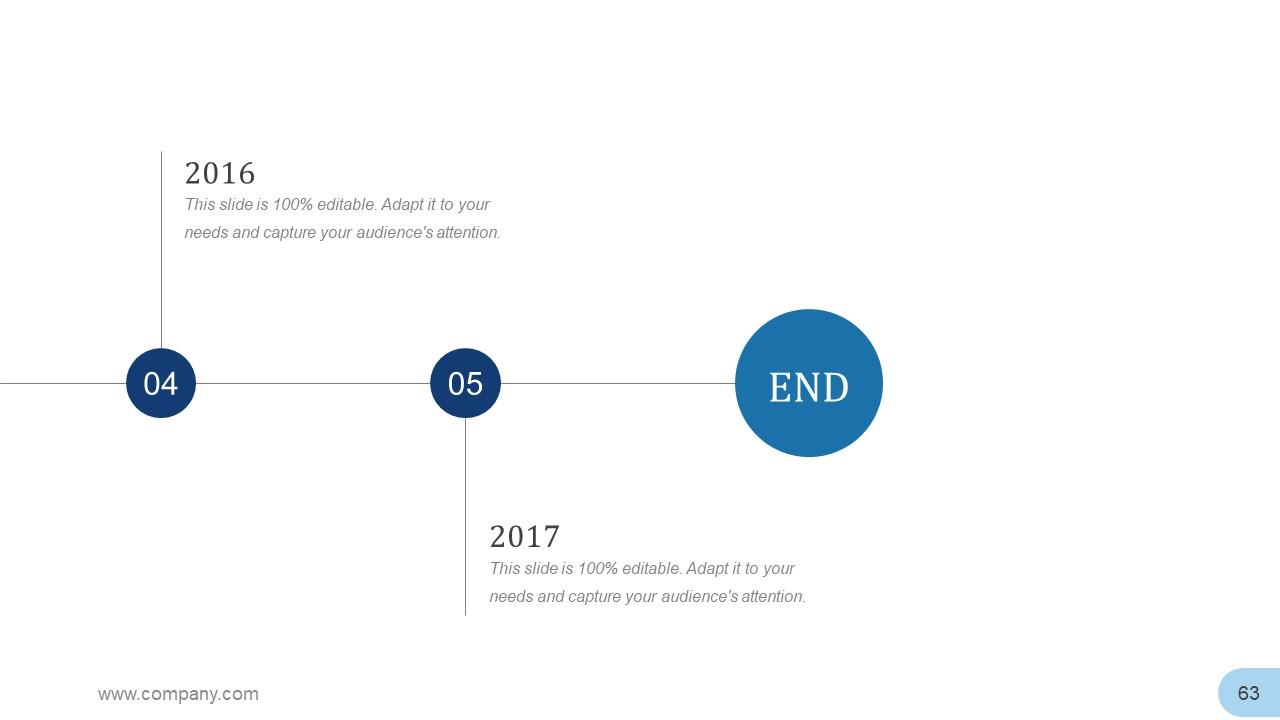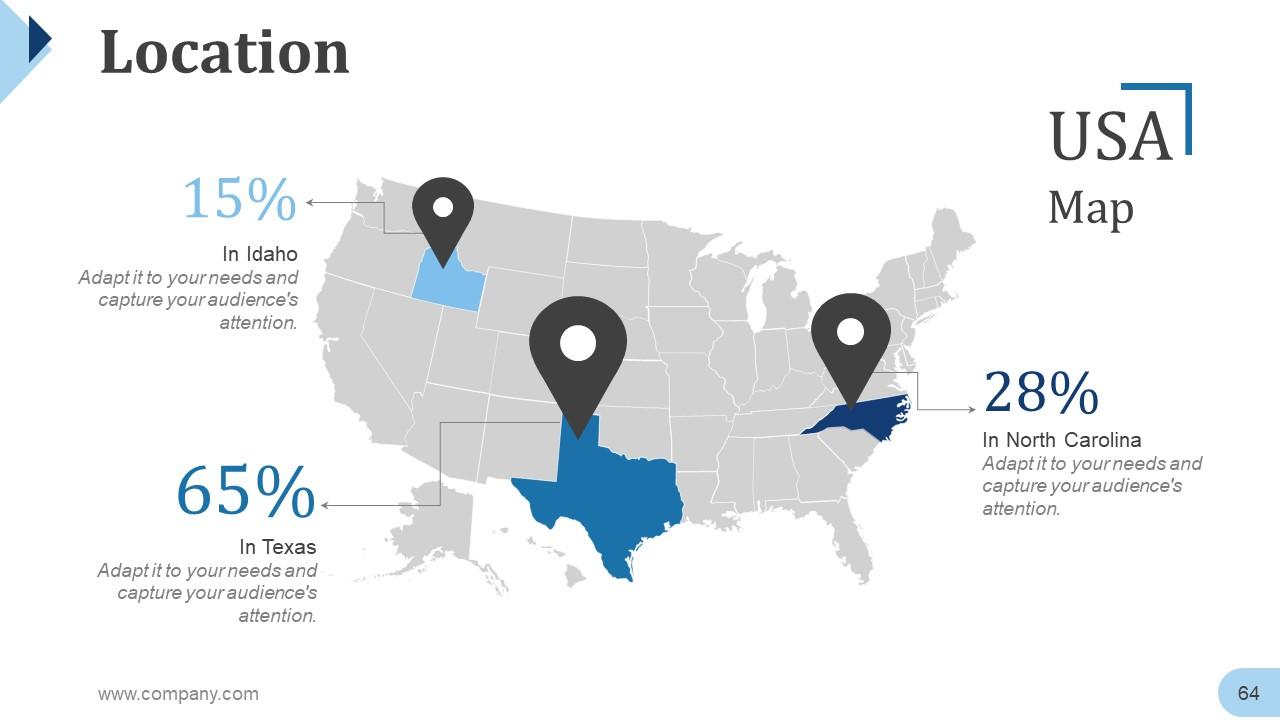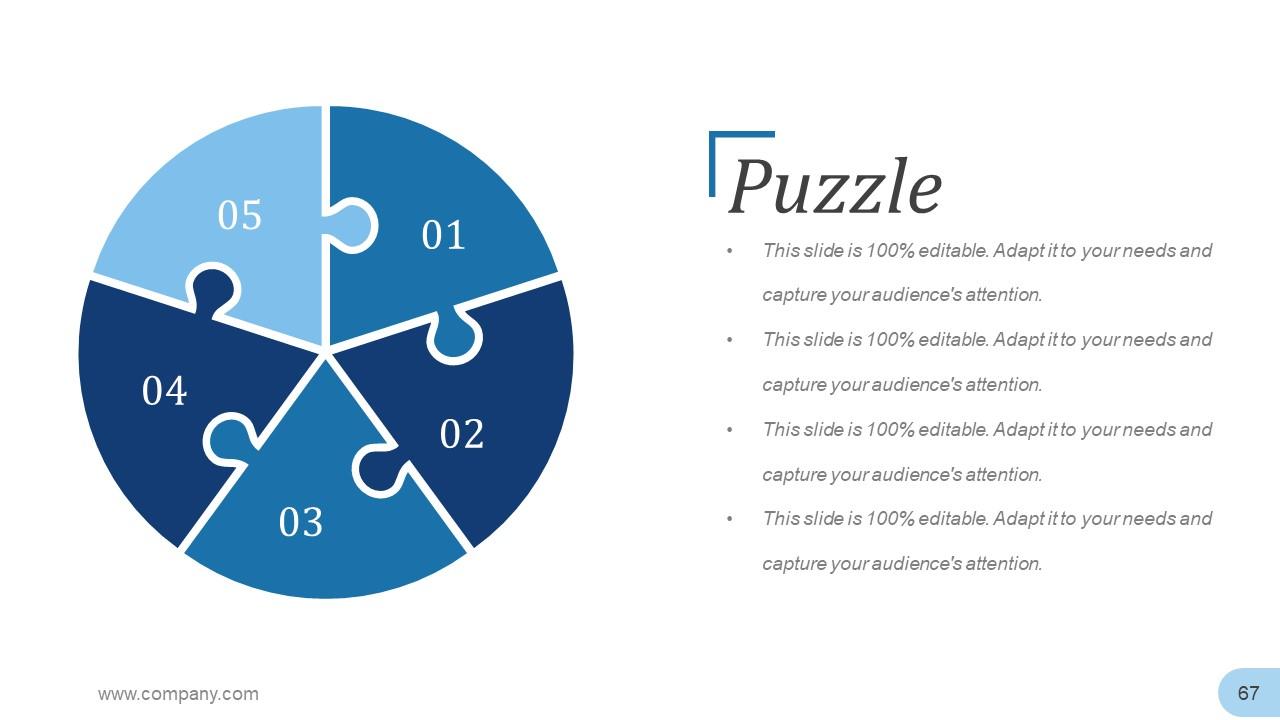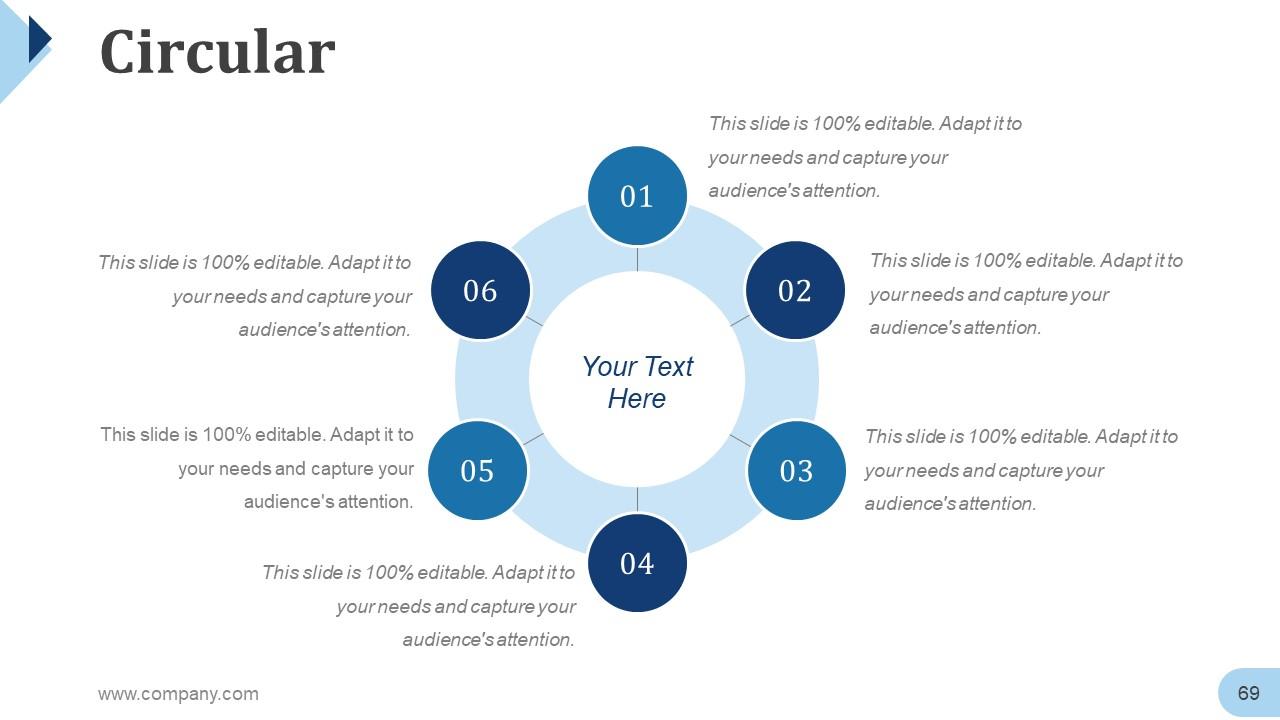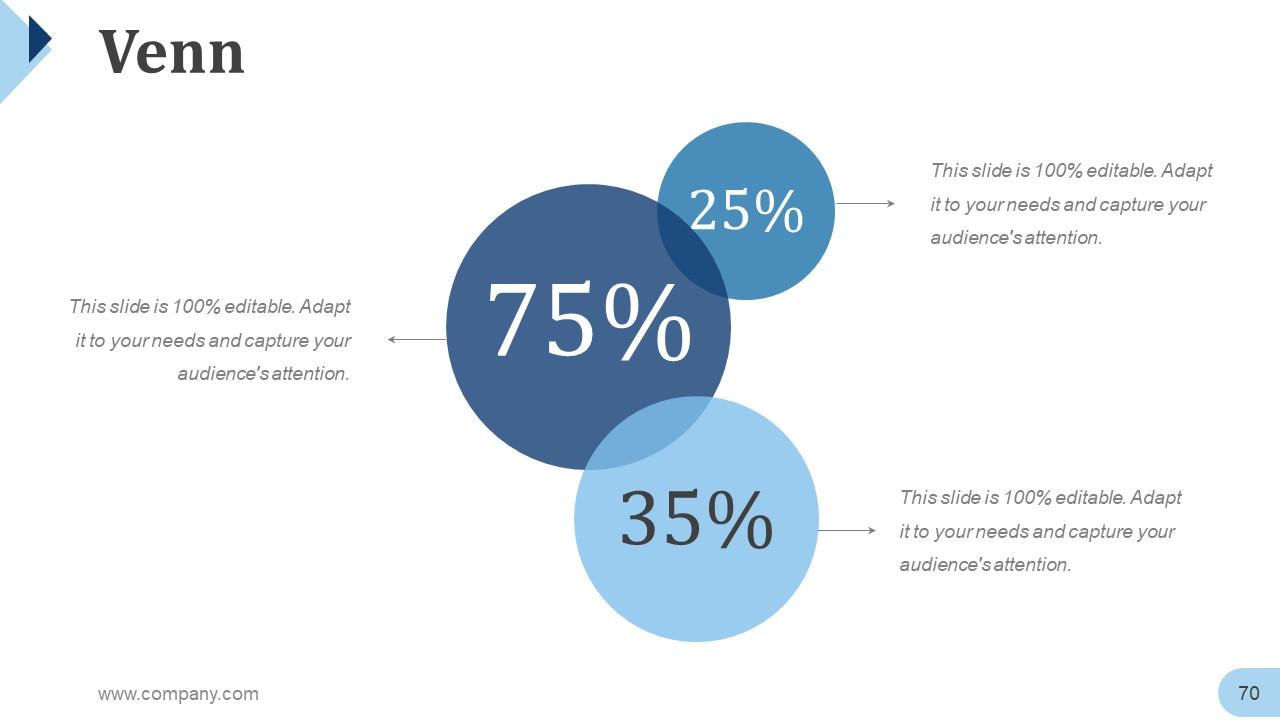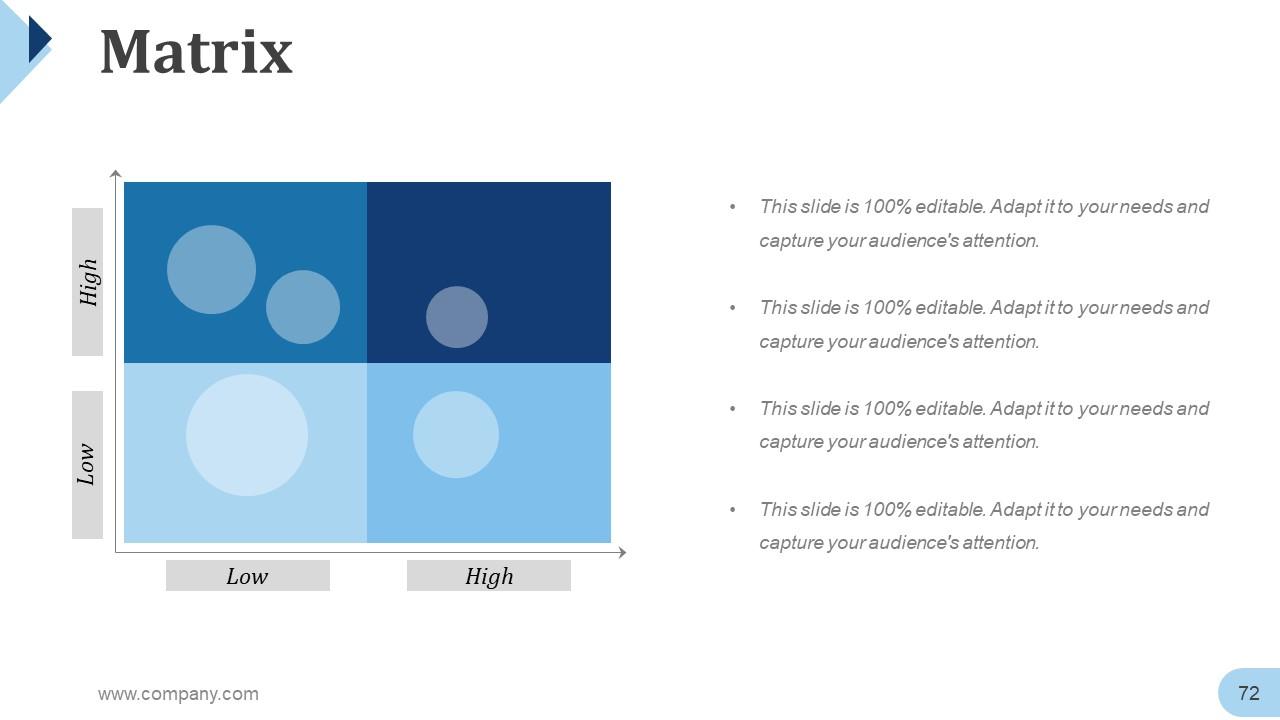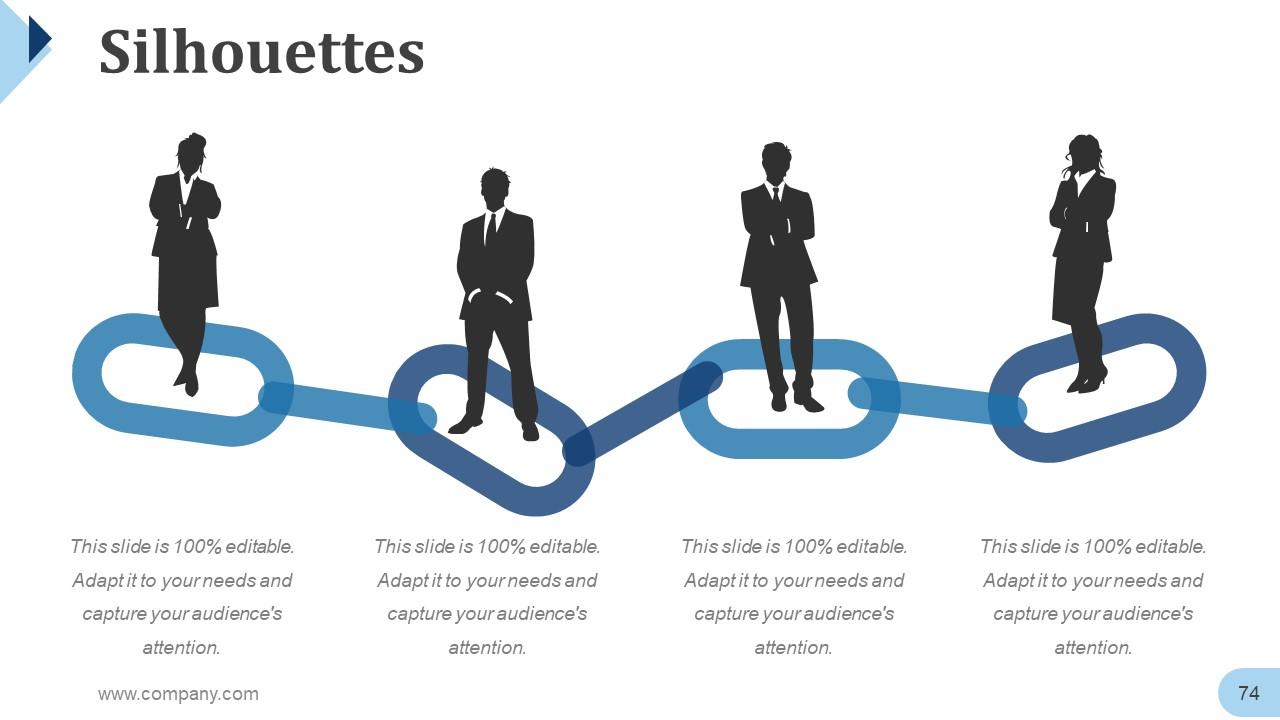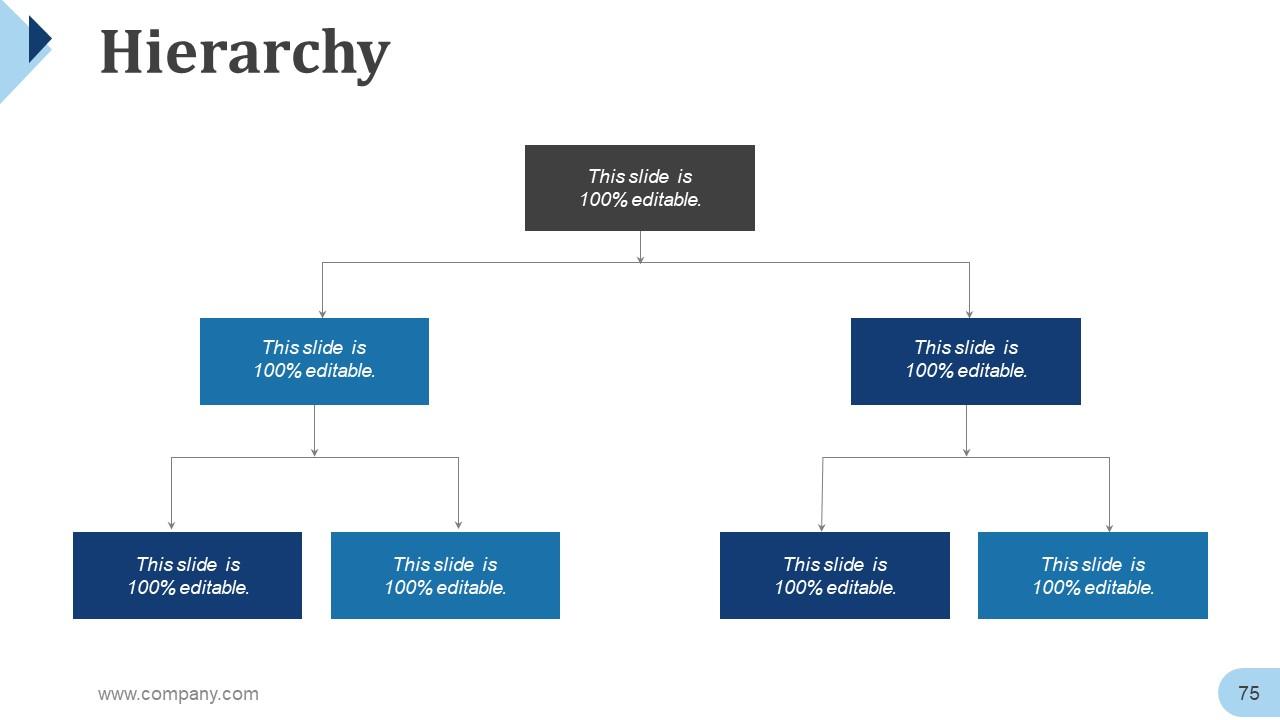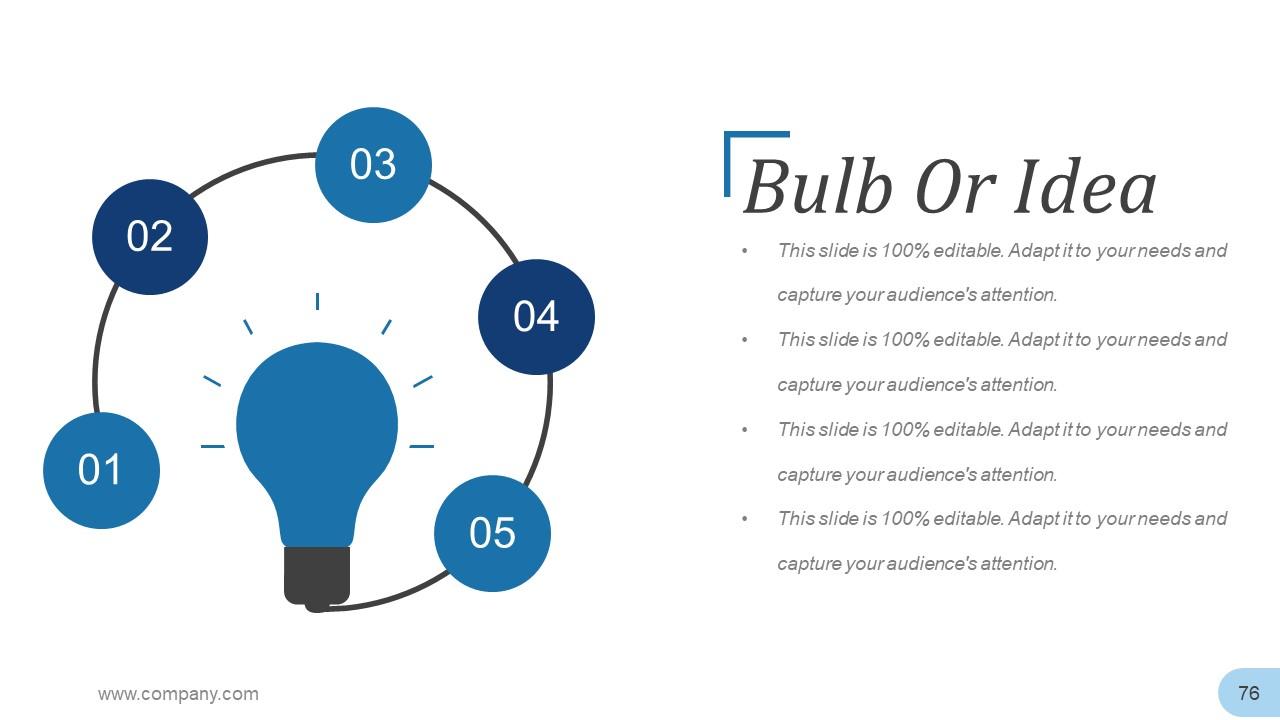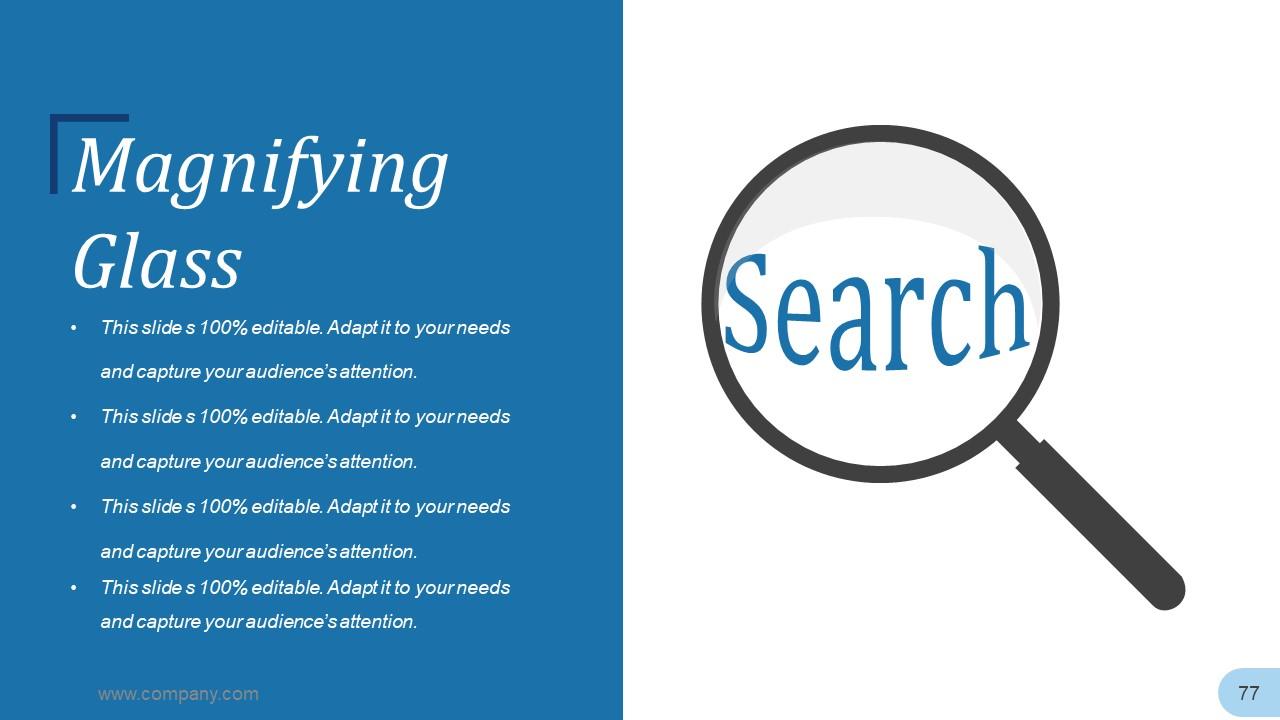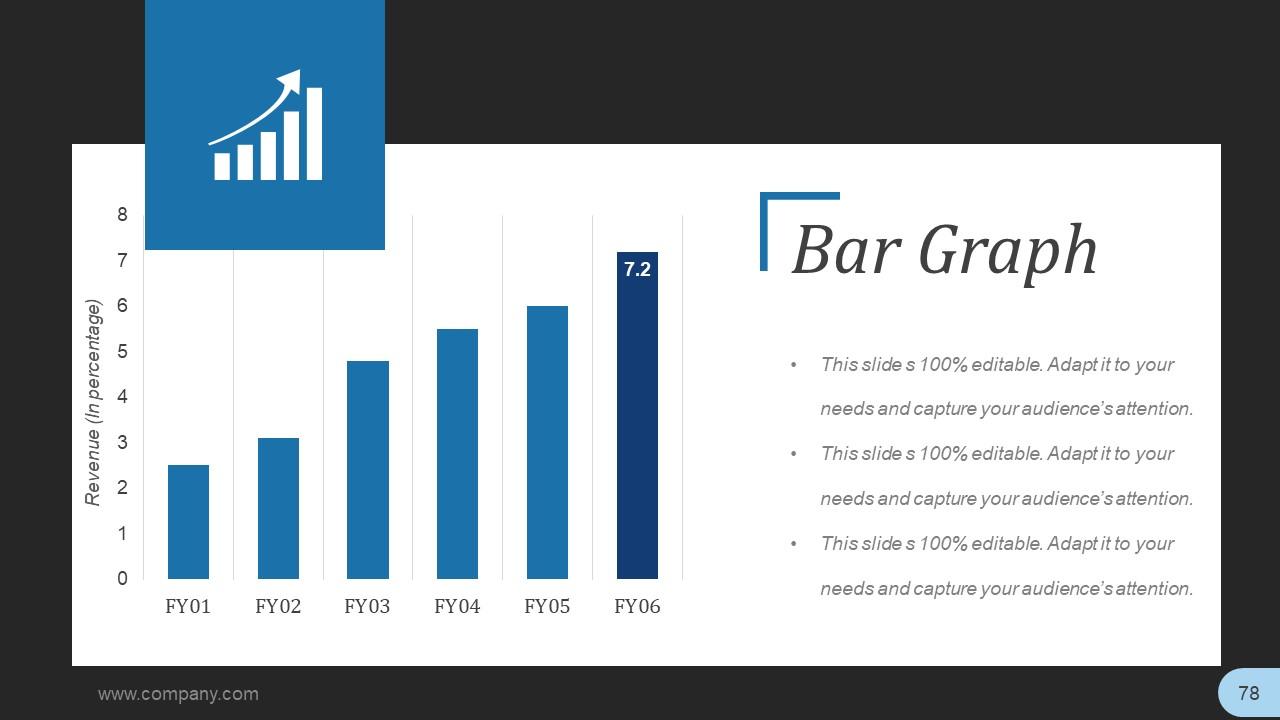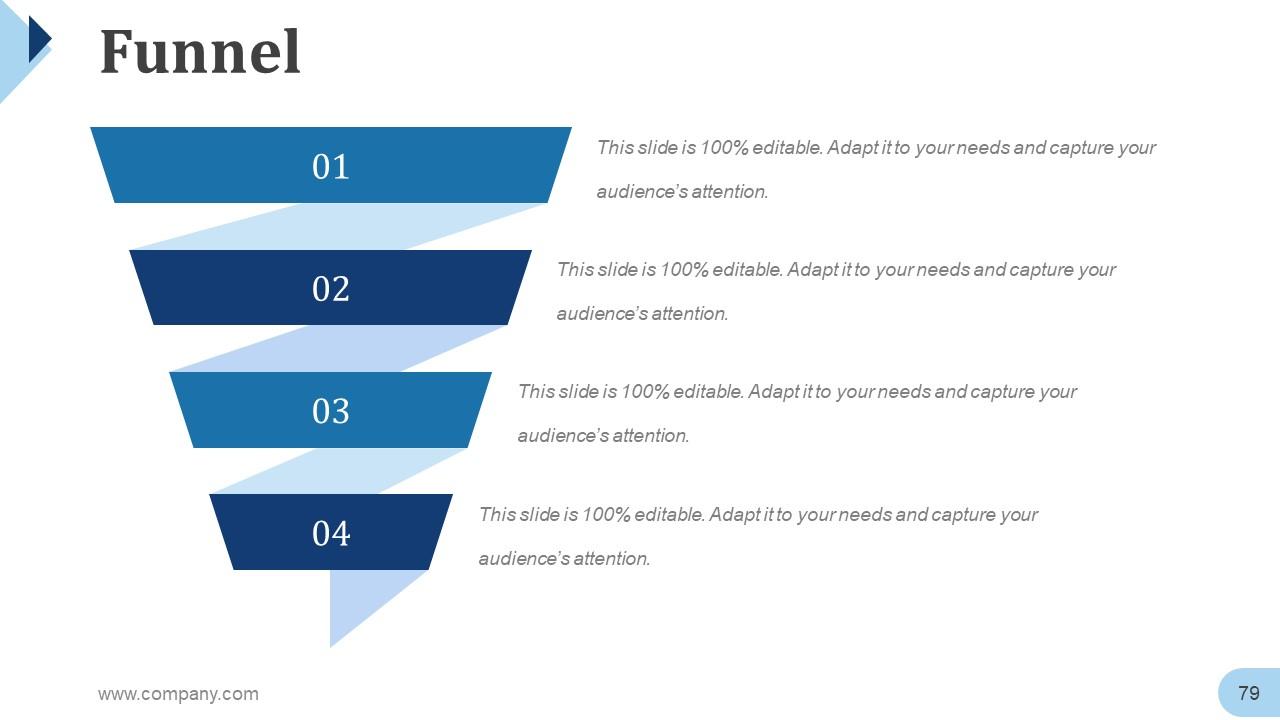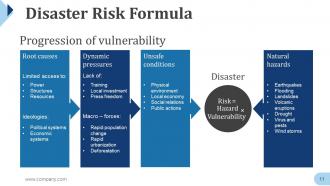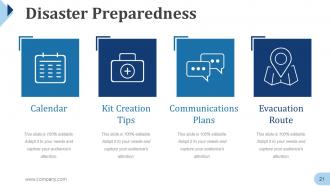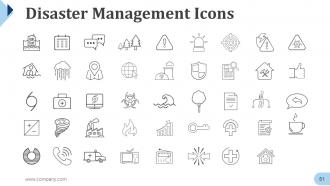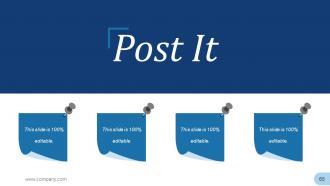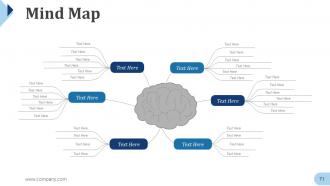Disaster management powerpoint presentation slides
Showcase your presentation skills with our disaster management PowerPoint presentation slides. This calamity control PPT deck gives you an insight into the real meaning of disaster management so that the viewers can get the correct information. Showcasing different types of tragedy handling such as natural and man-made disaster, and the further divisions in this mishap governance PowerPoint design help you in creatng more aware about them. The slides in this mishap oversight PPT bundle make it easier for you to manage things by providing you an authentic risk formula. Continuing further, the risk formula involves root causes, dynamic pressures, unsafe conditions, and natural hazards which are all displayed in this tragedy guiding creative PPT set. This setback controlling PowerPoint template also presents the components assessing for risk such as hazard, exposure, vulnerability, impact, and risk. Having a risk reduction method in one of the slides in this catastrophe controlling PPT set is the cherry on top. Grab it now to safeguard your business against all uncertainties.
- Google Slides is a new FREE Presentation software from Google.
- All our content is 100% compatible with Google Slides.
- Just download our designs, and upload them to Google Slides and they will work automatically.
- Amaze your audience with SlideTeam and Google Slides.
-
Want Changes to This PPT Slide? Check out our Presentation Design Services
- WideScreen Aspect ratio is becoming a very popular format. When you download this product, the downloaded ZIP will contain this product in both standard and widescreen format.
-

- Some older products that we have may only be in standard format, but they can easily be converted to widescreen.
- To do this, please open the SlideTeam product in Powerpoint, and go to
- Design ( On the top bar) -> Page Setup -> and select "On-screen Show (16:9)” in the drop down for "Slides Sized for".
- The slide or theme will change to widescreen, and all graphics will adjust automatically. You can similarly convert our content to any other desired screen aspect ratio.
Compatible With Google Slides

Get This In WideScreen
You must be logged in to download this presentation.
PowerPoint presentation slides
Presenting our disaster management PowerPoint presentation slide. This PPT layout holds a total of eighty slides and each one of them is accessible in standard as well as wide-screen formats. It is completely editable as per your requirements and preferences as well. You can use it with Microsoft Office, Google slides and many other presentation software.
Content of this Powerpoint Presentation
Remember the summer of 2020? Half the country was battling raging wildfires while the other half was preparing for tropical storms. In August, Hurricane Laura hit Louisiana hard, leaving chaos and destruction all over in its wake. Thousands were left homeless and without electricity, with some enduring weeks of darkness and limited access to basic necessities.
Lights Out in Louisiana: Could a Template Have Helped?
Imagine if a clear, structured, and well-planned roadmap existed in that situation, such as a disaster management template to guide response efforts. This blog will discuss types of Disaster Management Templates, explore their benefits, and explain how you can create one in a time of need.
What exactly is a Disaster Management Template?
A disaster management template is a pre-designed blueprint that outlines the steps, procedures, and protocols to be followed during a disaster or emergency. These templates can be modified based on the type of disaster, such as natural disasters (e.g., hurricanes, floods, earthquakes, wildfires), technological disasters (e.g., machinery failures, chemical spills, protocol hazards, power outages), or public health emergencies (e.g., pandemics, disease outbreaks).
Our templates aid in effective communication, crucial for preparedness, response, and recovery in tough times. Whether you're an experienced emergency management professional, a social worker, or a community leader building awareness, these make a difference.
A quick update: This complete deck of ten Disaster Management PowerPoint Presentation Slides contains top-notch graphics and visuals, such as tables, formula charts, bar graphs, bubble texts, flowcharts, icons, and pie charts, designed to present complex information clearly and concisely. Plus, each slide is 100% editable and customizable.
Let’s dig in!
Template 1: Types of Disaster
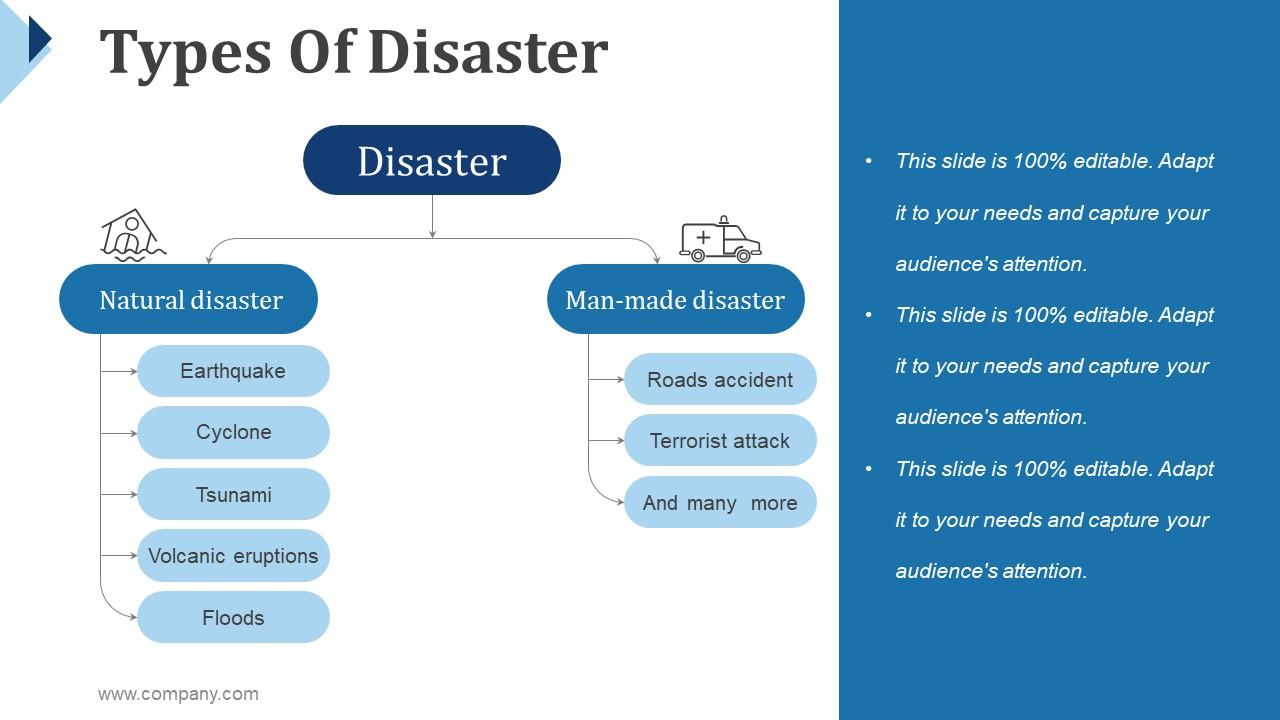
Disasters can strike in countless ways, just like categories on this slide! It encapsulates natural disasters, environmental emergencies, complex emergencies, and pandemic emergencies. It offers a well-demonstrated overview of potential crises, including earthquakes, road accidents, chemical spills, conflict situations, war, and disease outbreaks. This categorization aids in raising awareness, encouraging preparedness, and supporting response planning by developing targeted strategies, protocols, and training programs to mitigate risks and safeguard the well-being of those in need. Additionally, it supports proactive risk management efforts by enabling the prioritization of essential resources and implementation of mitigation measures to enhance resilience and reduce panic.
Template 2: Disaster Factors
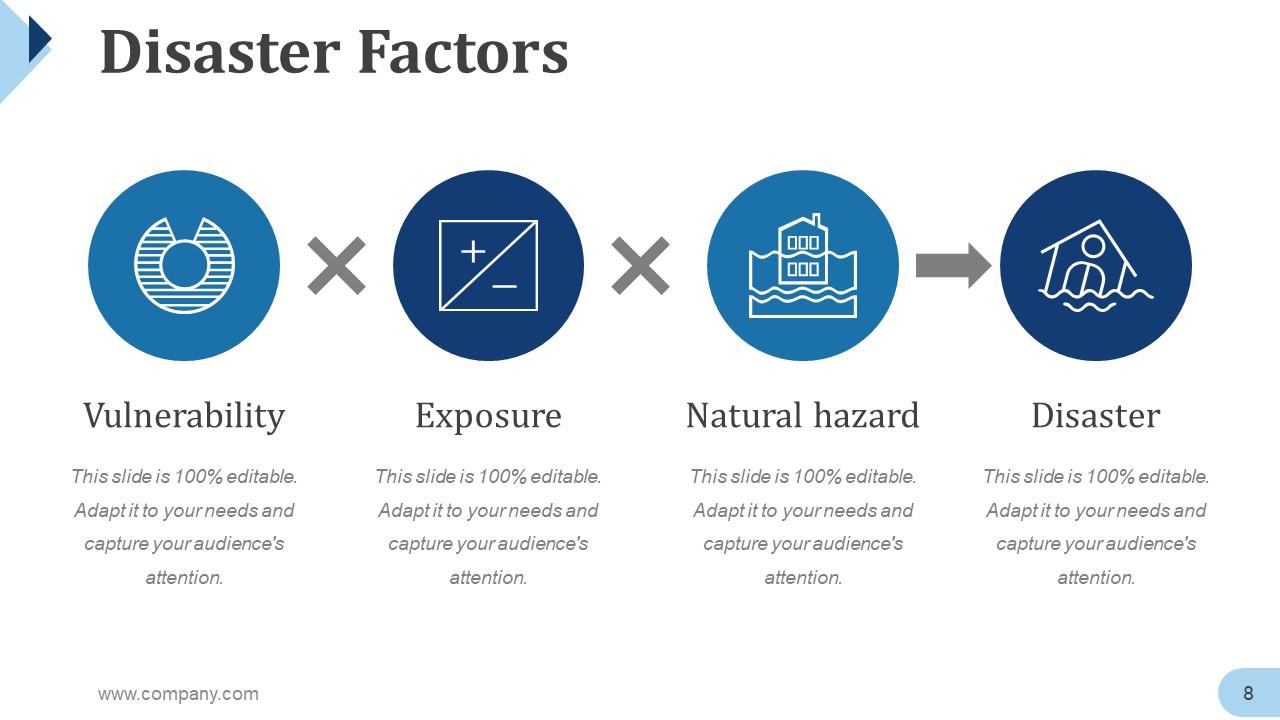
This slide focuses on key components that contribute to the occurrence and impact of disasters. It includes sections for vulnerability (poverty, lack of access to resources, or living in a high-risk area), exposure (community living on a flood plain), natural hazards (earthquakes, hurricanes, tornadoes, etc.), and disaster. It also hints toward factors such as the susceptibility of communities or infrastructure to adverse events and assessing the extent of the risk or potential situational harm that may trigger a disaster. The slide helps organizations address these factors and understand the complex interplay of elements contributing to disaster risk, enabling them to take steps to mitigate the risks.
Template 3: Disaster Risk Formula

Don't get wiped out! This slide reveals the secrets of disaster preparation, like vulnerability, exposure, and hazards, which are essential for understanding and managing disaster risks. From root causes to local investments, it highlights the formula of building a solid foundation of emergency preparedness, assessing contributing elements like dynamic pressures, unsafe conditions, and limited access to power, training, structures, and resources. The slide acknowledges how ideas, political views, and economic structure can accelerate disaster vulnerability. Additionally, the slide emphasizes the importance of considering natural disaster hazards and local investment, along with external forces like population change, urbanization, and environmental degradation.
Template 4: Components Assessing for Risk
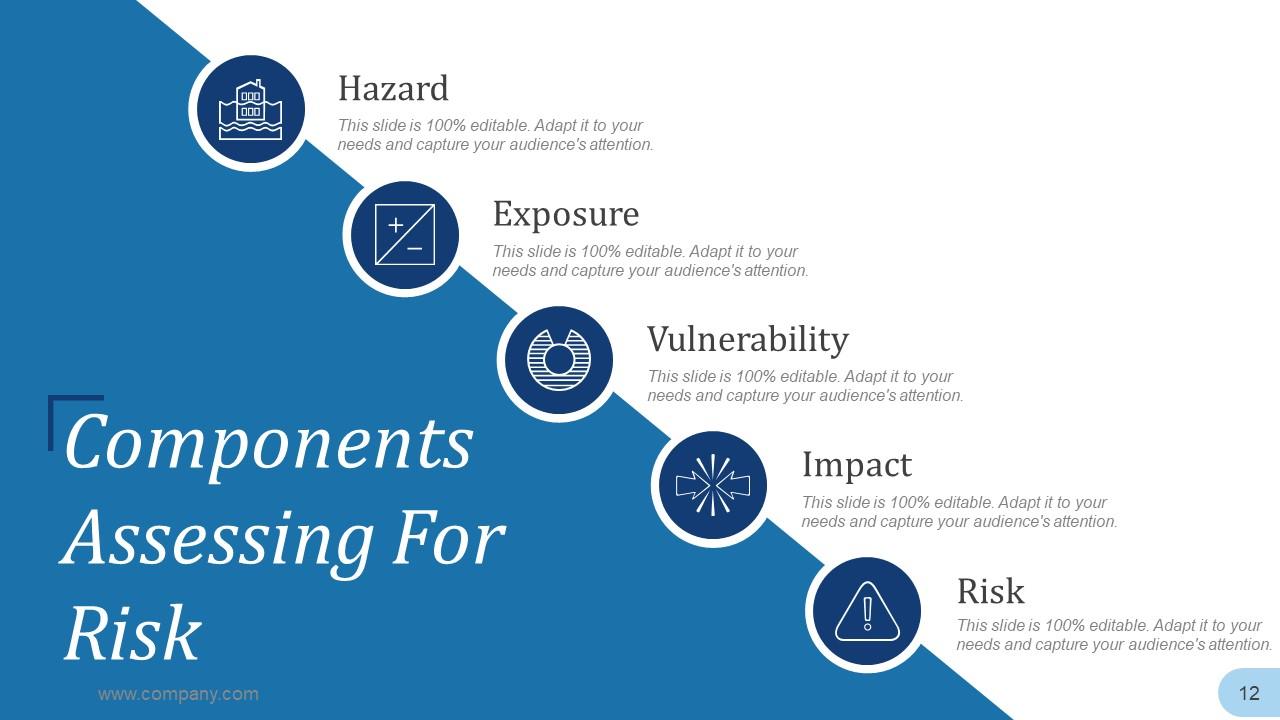
This slide breaks down steps involved in a risk assessment. Start by defining and identifying potential hazards within your region. The slide then lets you analyze these hazards (exposure), considering how likely they are to occur (vulnerability) and how serious the threats could be, determining the risk level (impact & risk). Discuss strategies to control these risks using safeguards, procedures, functional exercises, training courses, or After-Action Reviews (AARs). These components give you a clear picture of the structured approach to managing risk proactively and foreseeing potential risks.
Template 5: Risk Mapping
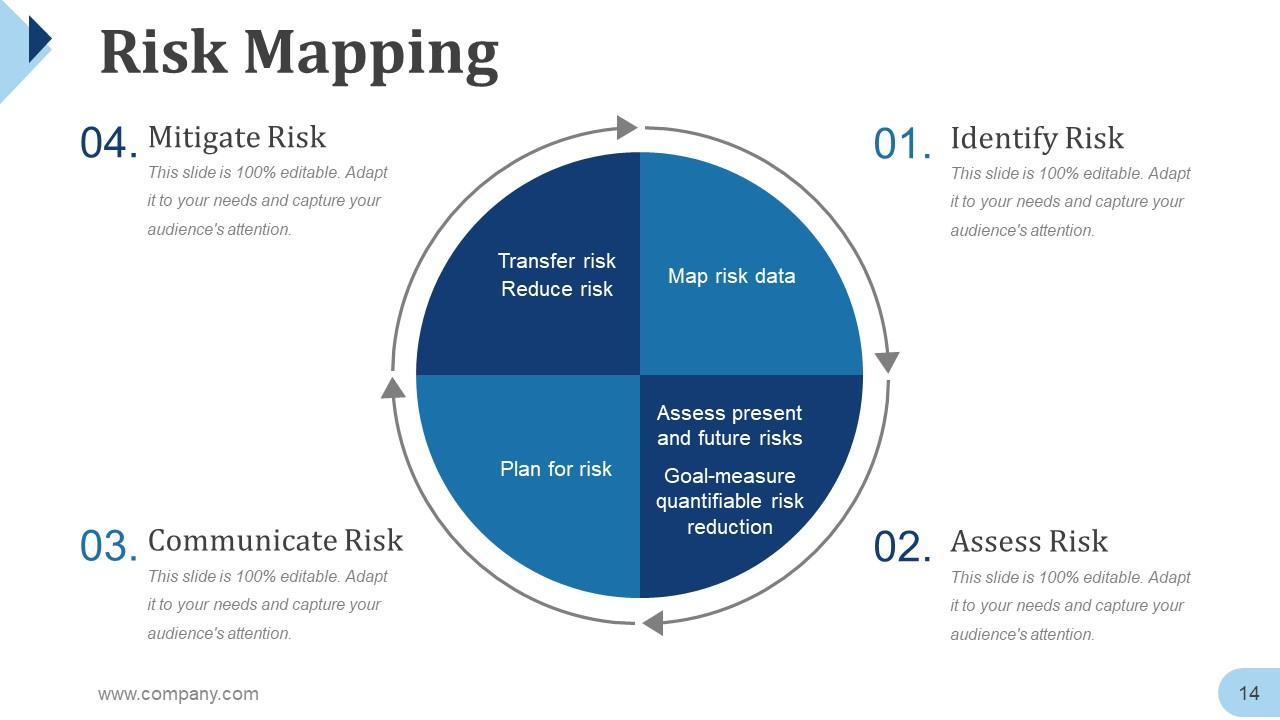
This interactive slide offers a structured approach to managing risks. Divided into four sections, it guides the audience through each risk management stage. Beginning with 'Identify Risk,' it prompts the audience to recognize potential risks and vulnerabilities. Moving to 'Assess Risk,' the slide encourages an in-depth evaluation of potential present and future risks. The 'communicate risk' section demonstrates the importance of transparent communication regarding organizational risks. Finally, 'mitigate risk' outlines strategies for reducing and transferring risks, including mapping risk data and planning for risk scenarios.
Template 6: Major Disasters
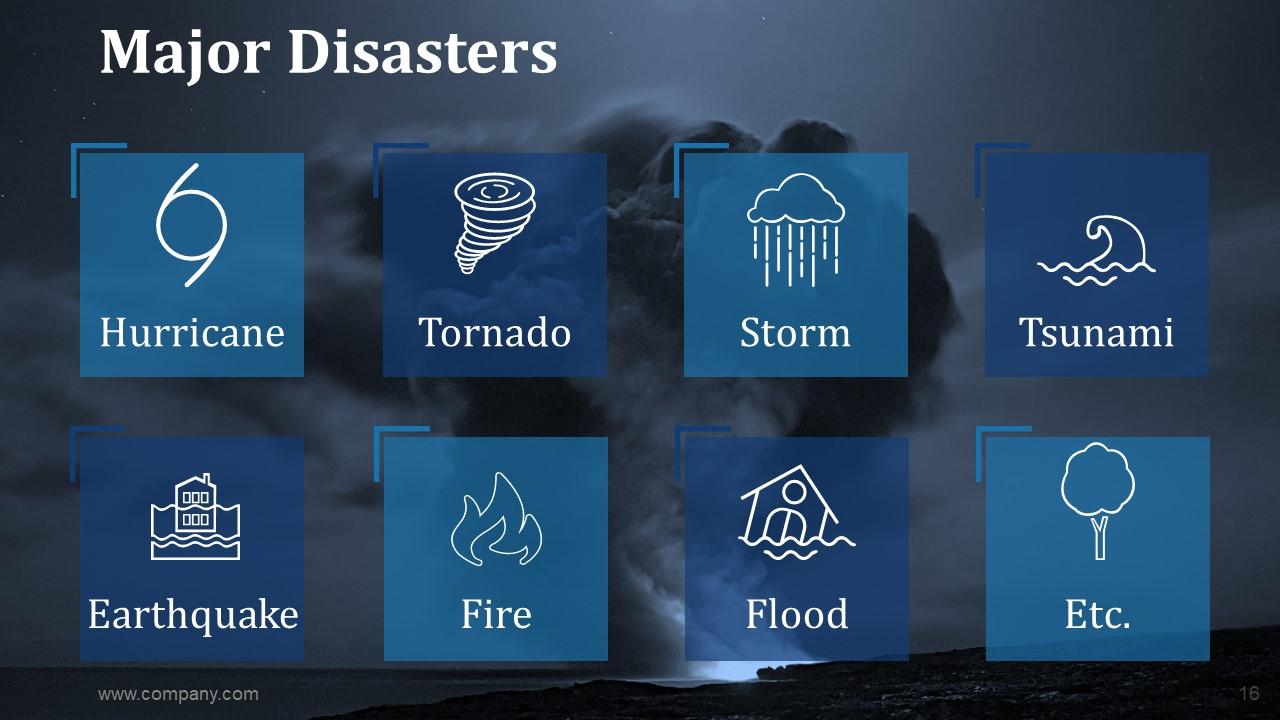
This slide illustrates Mother Nature's fury—all in one—urging you to be proactive, build resilience, and minimize damage! It gives you a stark look at major disasters—hurricanes, tornadoes, storms, tsunamis, fires, floods, and earthquakes. Each disaster comes with a sophisticated yet alarming icon, a reminder of the devastation these events hide beneath. It's a wake-up call for preparedness: get ready; get informed because disaster doesn't discriminate.
Template 7: Disaster Cycle
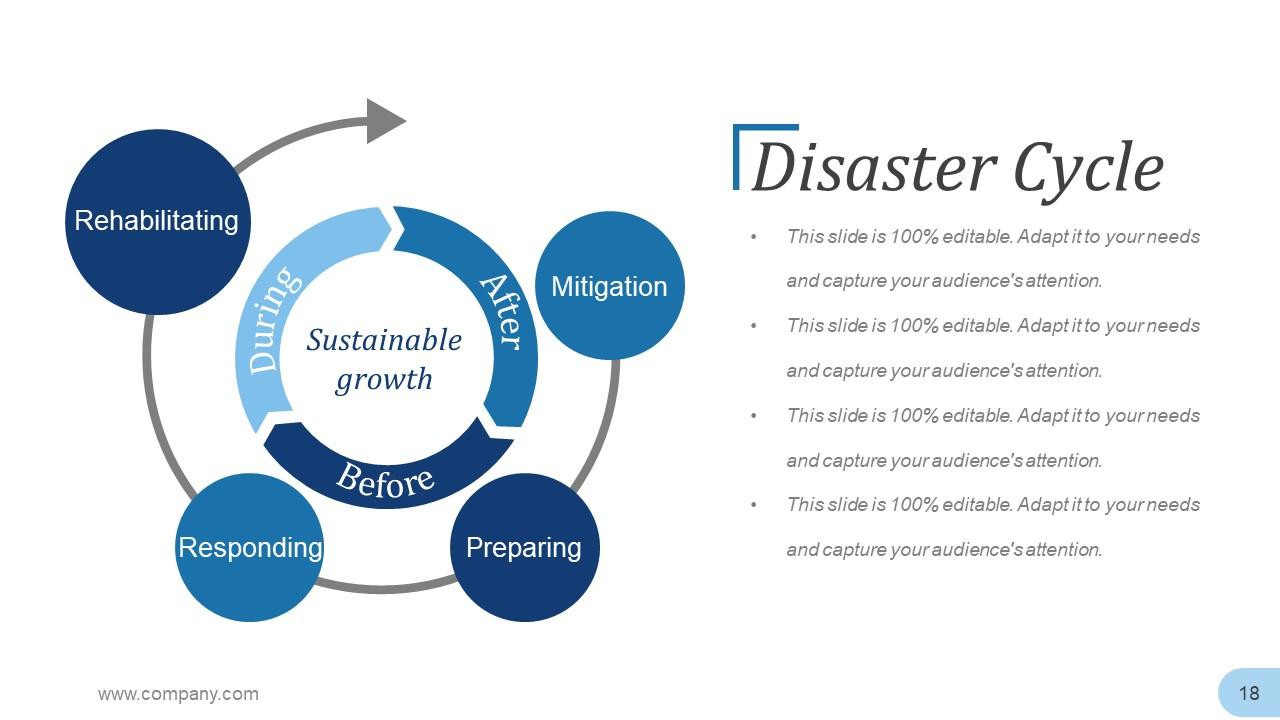
The disaster cycle in this slide outlines the stages involved in managing and responding to disasters. Classified into four sections, it guides the audience through each phase of sustainable growth of the disaster cycle. The ‘before' section includes proactive measures such as disaster preparedness planning, risk assessments, and early warning systems to minimize the impact of disasters. The 'during' section addresses immediate response efforts, highlighting the urgency for response measures, search and rescue operations, and humanitarian aid delivery. The ‘after' focuses on the rehabilitation and recovery phases, addressing immediate needs, rebuilding infrastructure, and supporting affected communities. Embrace every twist and turn of the disaster cycle with the slide’s additional sections, such as mitigation, preparing, responding, and rehabilitating.
Template 8: Disaster Preparedness

This slide lays out everything you need to tackle climate change disasters. It stresses the importance of preparing for tougher times and disasters like storms, tsunamis, and wilder weather. The slide empowers communities to build resilience and weather the storm by focusing on policies, research, and implementing plans. It outlines a cyclical process with policy and practice interlinked. Here’s a breakdown:
Climate Change examines rising temperatures, sea level rise, and more extreme weather events.
Research on climate change aids in policy decisions. It examines temperatures, heat, vector-borne diseases, risk communication, vulnerabilities, migration, and resilience.
The Policy addresses climate change through adaptation and preparedness strategies. These could include focusing on policy effectiveness programs and implementing health co-benefits.
Practice puts the policies into action. This involves program development and risk communication strategies, training/ education programs, and decision-making about responding to disasters.
Template 9: Phases of Post-Disaster Recovery
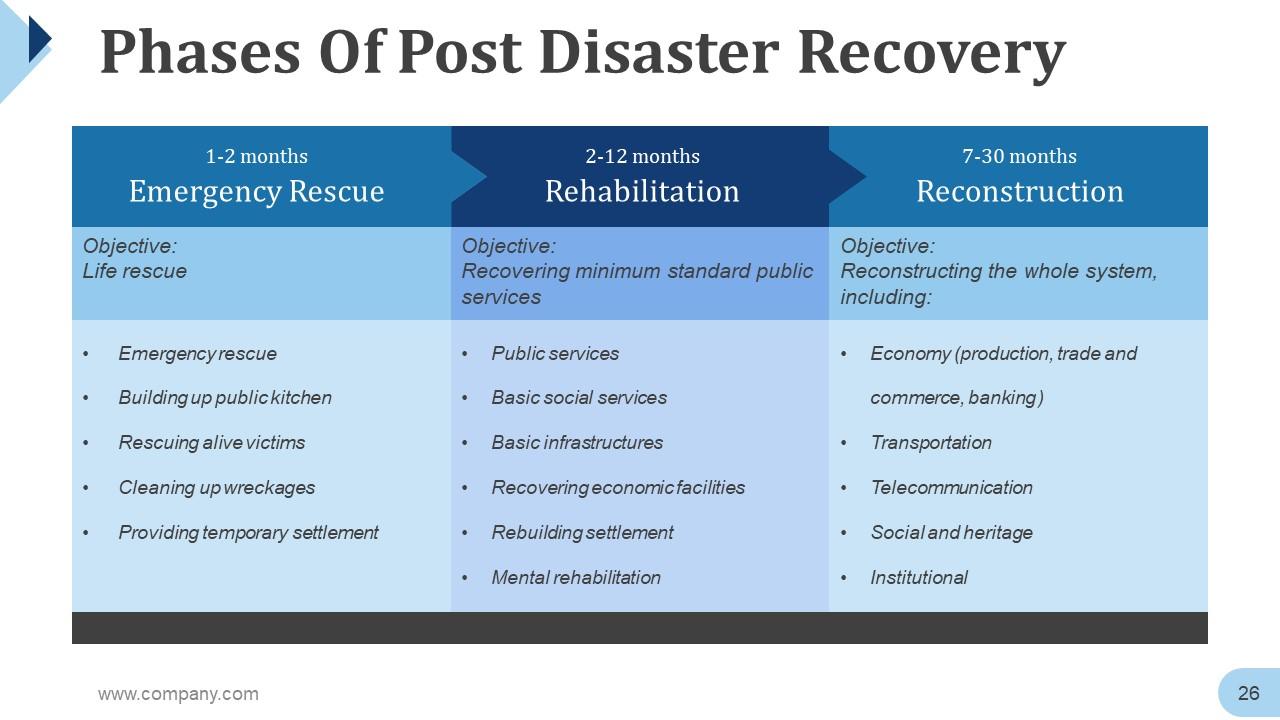
From rescue to rebuild, it is a long road to recovery after a disaster strikes. This slide illustrates the three crucial phases of post-disaster recovery: emergency rescue, rehabilitation, and reconstruction, each pivotal in strengthening communities.
Emergency Rescue lasts 1-2 months after a disaster. It is focused on saving lives, rescuing survivors, providing medical care, and setting up temporary shelters. It also involves establishing public kitchens, debris cleanup, and restoring utilities.
Rehabilitation lasts 2-12 months and primarily aims to restore basic public services and infrastructure. Activities include repairing roads and bridges, restoring power and water supplies, reopening schools and hospitals, and providing basic mental health services. Mental health services focus on assisting with the psychological impact of the disaster.
Reconstruction can span seven-30 years and aims to rebuild the community and restore its economy. It involves initiatives like rebuilding homes and businesses and revitalizing sectors like industry and finance, telecommunication, transportation, institutional, and social and heritage well-being.
Template 10: Disaster Statistics
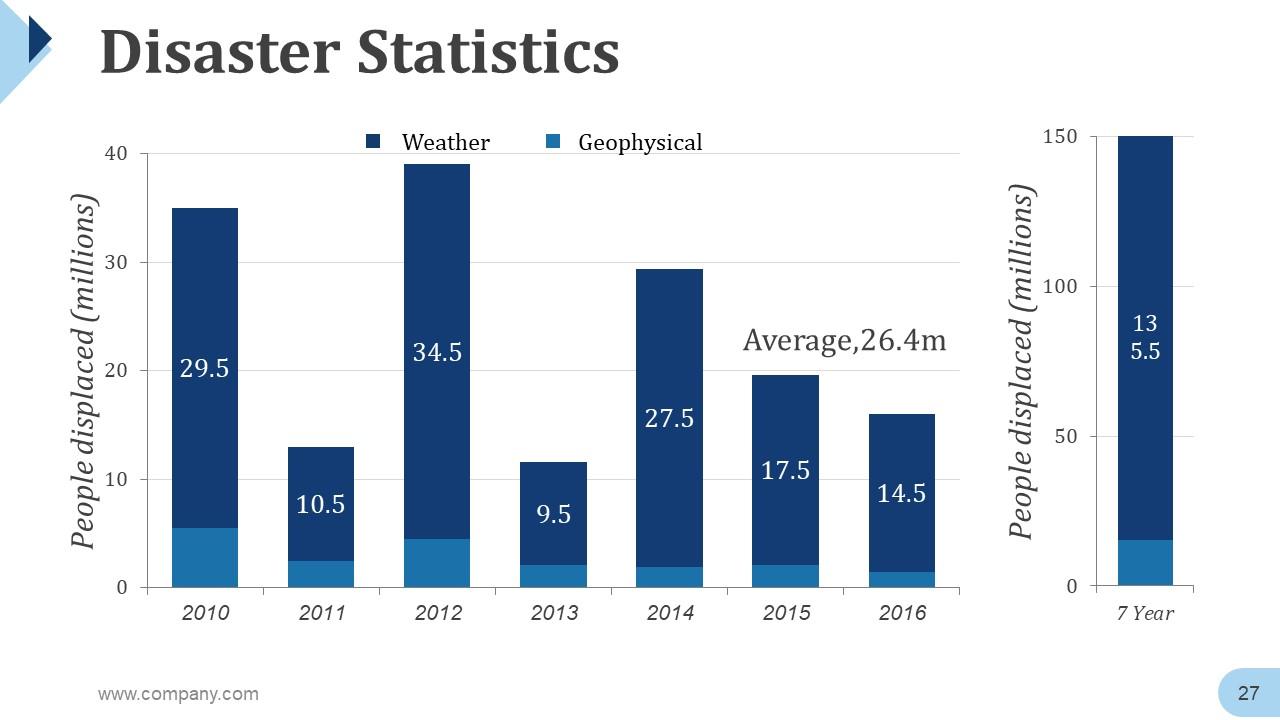
This slide depicts the average number of people displaced (in millions) by disaster types over a seven-year period (2010 to 2016). The data is classified into geophysical disasters (earthquakes, volcanic eruptions, etc.) and weather disasters (floods, earthquakes, storms, etc.). This information helps preparation by highlighting common disaster types and their displacement impact. The easy-to-understand information in the slide allows communities to stockpile supplies, create evacuation plans, prepare for potential threats, and reinforce infrastructure. Additionally, this data allows disaster relief organizations to allocate resources effectively by targeting vulnerable areas. Statistics can also be used to advocate for stronger policies and raise awareness.
It’s Time To Get Panic-Key!
Imagine a wildfire raging through a forest - that's a natural disaster. But if a factory malfunction sparked that fire, it becomes an environmental disaster, too. Things can get even trickier with complex emergencies, which mix natural disasters like floods with human struggles like war. And who can forget pandemic emergencies? Those are the fast-spreading illnesses that cause chaos around the world. The key takeaway? Disasters can strike anytime, anywhere, but being prepared is crucial.
Thankfully, you now know how to be prepared to effectively communicate your organization's disaster management plan to your team and the public.PS Here are our products that emphasize the importance of disaster recovery and mitigation.
Disaster management powerpoint presentation slides with all 80 slides:
Use our Disaster Management Powerpoint Presentation Slides to effectively help you save your valuable time. They are readymade to fit into any presentation structure.
-
Design layout is very impressive.
-
Great product with highly impressive and engaging designs.



